Welcome to Spain, and more precisely to Catalonia! During the winter of 2021-2022 we decided to “migrate” to the south of Europe in search of some warmth with our van. Our initial plan was to drive straight down to Andalusia (well we finally did à 10 weeks roadtrip in Andalusia), simply making a few stops along the way to air out the dog and stretch our legs on the long drive. In the end, we fell so much in love with Catalonia and its landscapes that we ended up spending almost 2 weeks there. Not particularly enchanted by the idea of following the Costa Brava, we opted for an inland route. Some will say that it was a bit ambitious to go to the mountains in the middle of December (we won’t lie, it was not warm in the van), but in the end we are more than happy with this change of program!
Far from having seen the whole region, we propose you a small best-of of our visits in Catalonia! And believe us, in Catalonia there is something for everyone! In short, a first article on this magnificent part of Spain which made us want to discover more 😉
- Map of Catalonia: the places we visited
- The Monastery of Sant Pere de Rodes: at the entrance to Catalonia
- Cap de Creus: our hike to the lighthouse
- Cadaqués
- Besalu: one of the most beautiful medieval villages in Catalonia
- The village of Rupit
- Hiking around Rupit
- The Foradada waterfall (Salt d’Aigua de la Foradada)
- Tavertet and its viewpoints
- The morro de l’abella
- A short stop at the Catalan Horseshoebend: the mirador del Ter
- The Natural Park and monastery of Montserrat
- A warm break in Tamarit – Catalonia by the sea
- Siurana: The paradise for climbers and wine lovers in Catalonia
- The castle of Miravet
- Fontcalda
- See the flamingos in Catalonia: Visit the Ebro Delta
- Camping “La Tancada” – Ebro Delta – Come and eat here!
Map of Catalonia: the places we visited
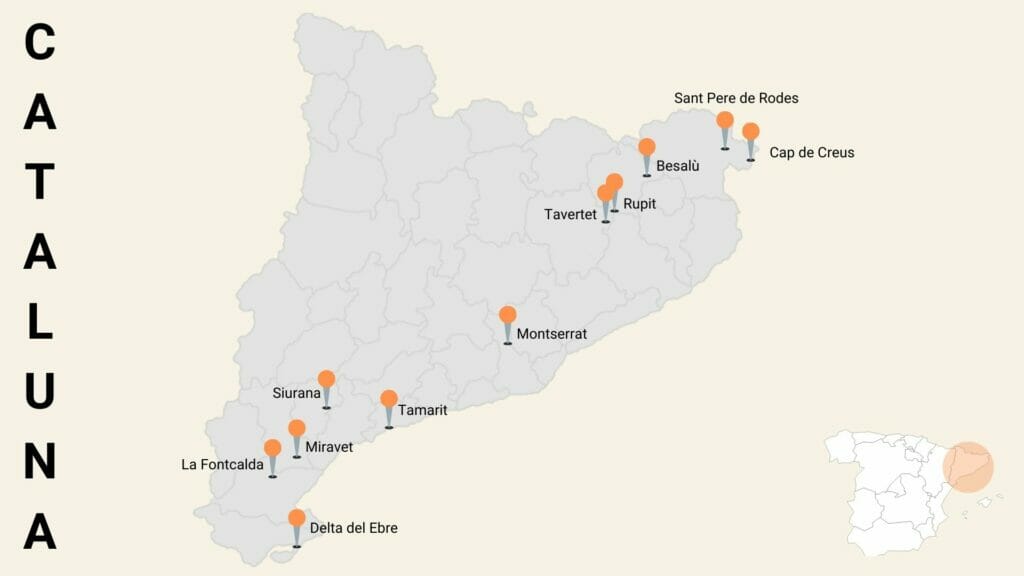
The Monastery of Sant Pere de Rodes: at the entrance to Catalonia
To get to Catalonia we took the coastal road from Cerbère (in France) to Portbou (in Spain). We decided to make our first stop some 25 km south of the border: the monastery of Sant Pere de Rodes.
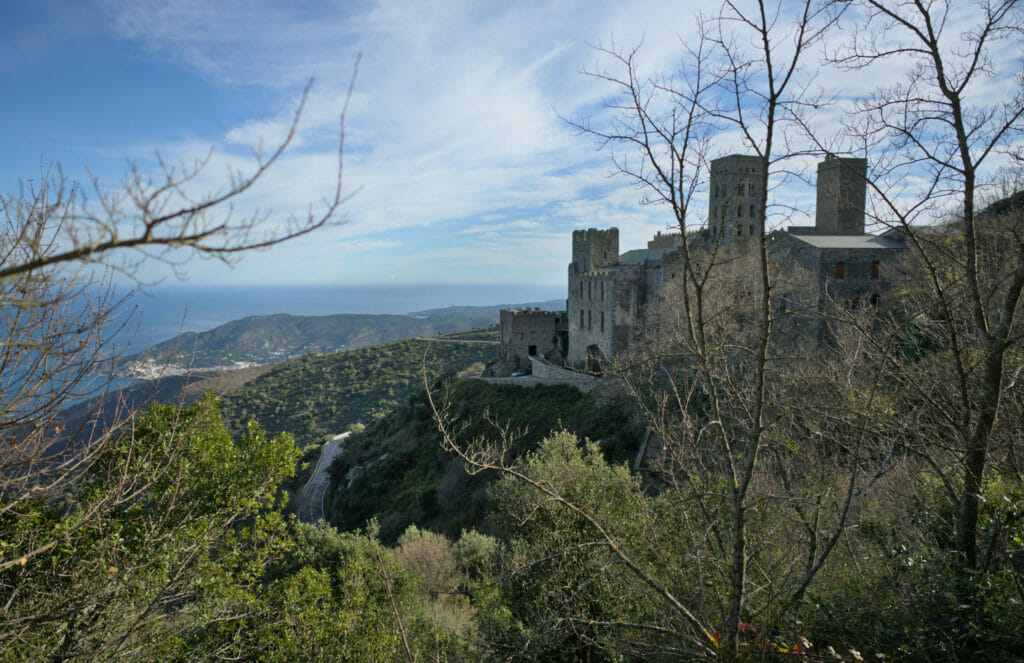
Our idea in coming here was to stretch the dog’s legs a bit after the long drive but also to enjoy the breathtaking view from up there. The Monastery of Sant Pere de Rodes is literally perched at the top of the Verdera mountain range, a mountainous massif of the Sierra de Rodes and which marks the beginning of the natural park of Cap de Creus.
From the monastery there is a panoramic view of the bay of Llança and more globally of the northern coast of Catalonia. After, technically speaking the monastery is not quite at the top… 😉 It is dominated by an old castle (which was used as a protector at the time). Needless to say, it seemed obvious to us to climb to the highest point to have the “best view” 😉
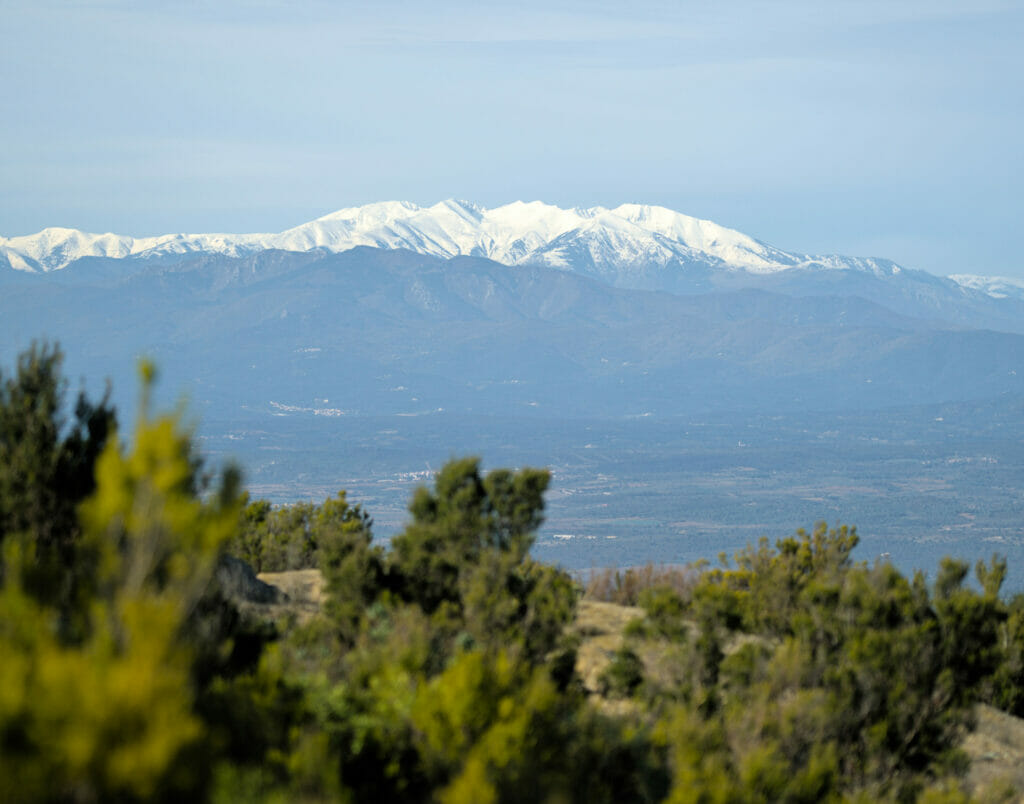
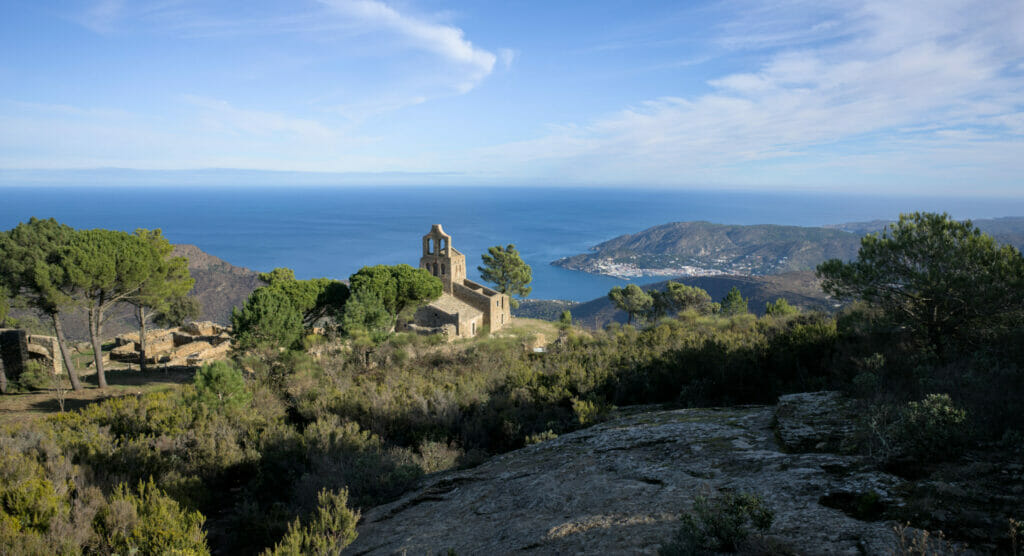
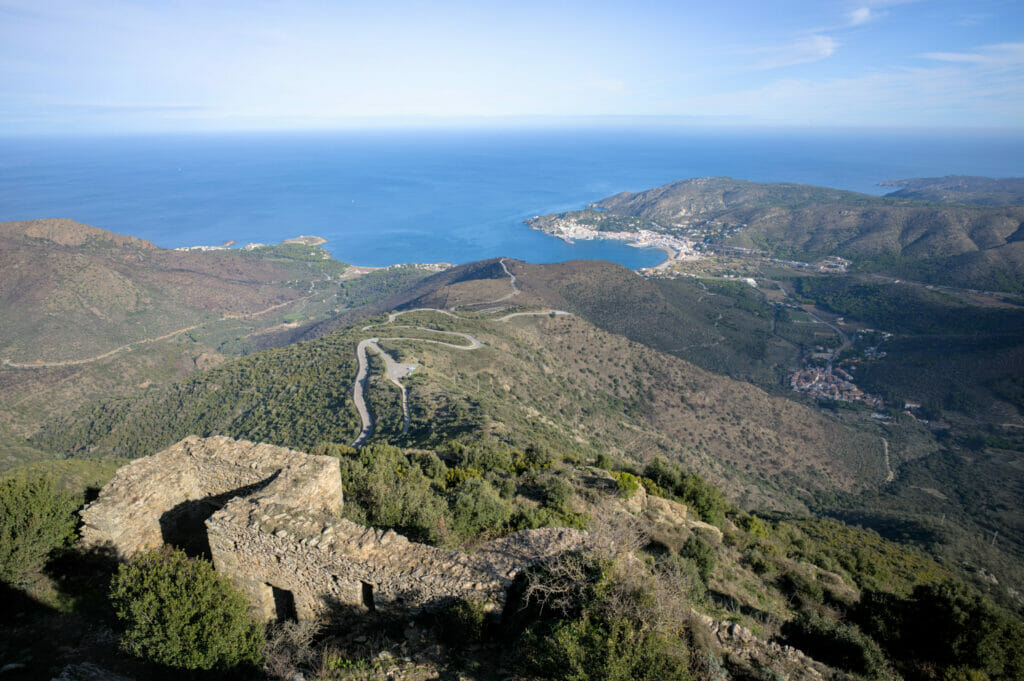
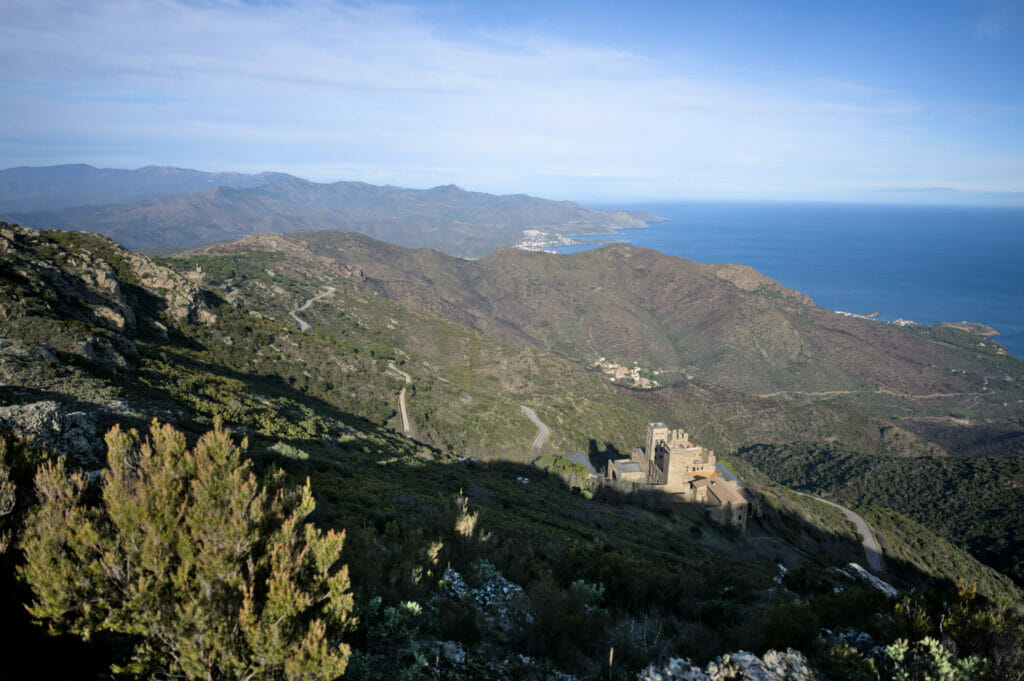
The hike in short:
- 4.2 km and 178 m of elevation change (positive and negative)
- Count 1h30 to make the loop
- To start the hike, we parked on the first parking lot when we arrived at the monastery. It is possible to shorten the loop if you park near the church. Off season, our van was the only vehicle in the parking, but no doubt that in high season you will have less leisure to choose the parking and will take the one which is available.
- It is possible to visit the monastery. The entrance fee is 6€ and it is open from Tuesday to Sunday, from 10am to 5:30pm in winter and until 8pm during the summer months.
Map of our hike around the monastery:
Cap de Creus: our hike to the lighthouse
After the visit of the monastery we went on with a second small hike. This time we went to the end of the natural park of Cap de Creus, at the foot of the lighthouse to be exact. There, we made a small loop of 2,6 km to make the tour of the cape (we put you the map of our walk below). We really liked this short walk and we say to ourselves that we would come back one day in this park for a little longer itinerary!
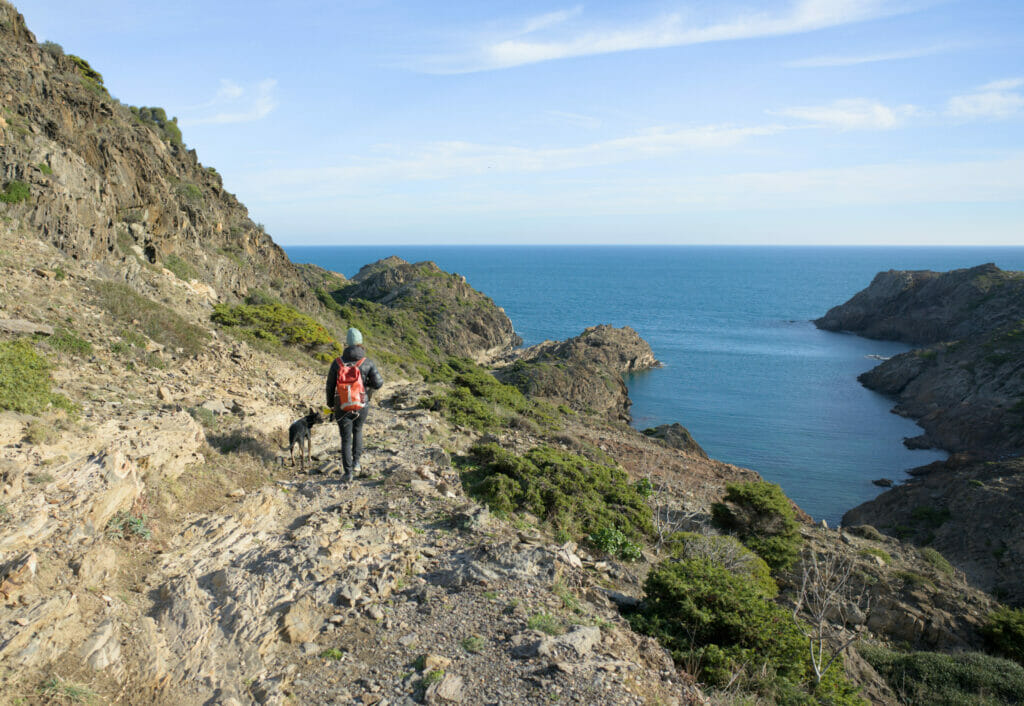
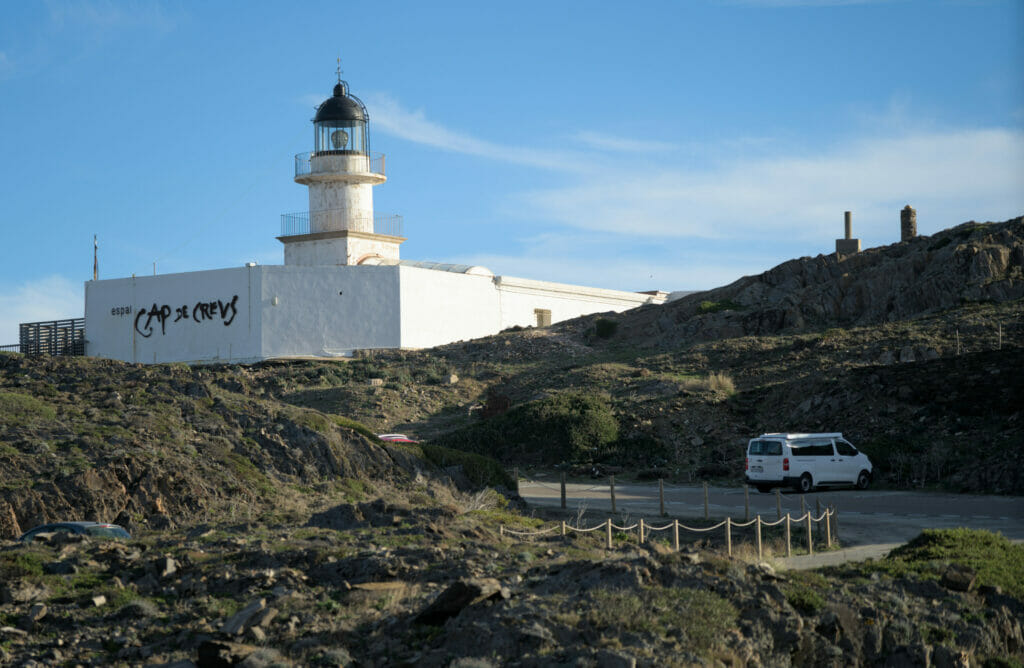
Here everything is really wild and preserved! By the way, at the end of our walk we arrived in front of Cala Culip. This place is known to have been the place where a huge Club Med of 400 bungalows was installed from 1962 to 2004. When the club closed its doors, the state bought the land and proceeded to massive investments to completely restore this natural area. Today there is not a single trace of the resort left! All the concrete slabs have been removed and even the plants that had been added by the resort have been removed (by hand to avoid damaging the rocks)! In short, a nice example of a natural space that won out over a big tourist infrastructure. This kind of approach is rare enough to be noted and we really salute the effort of the Catalan region and the Spanish government on this one!
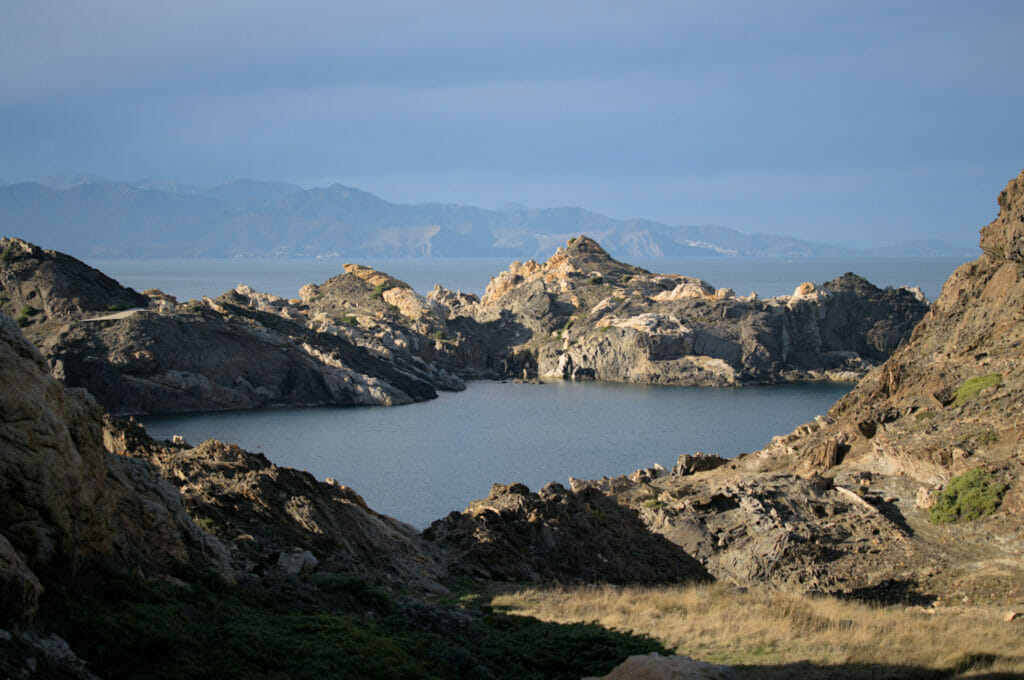
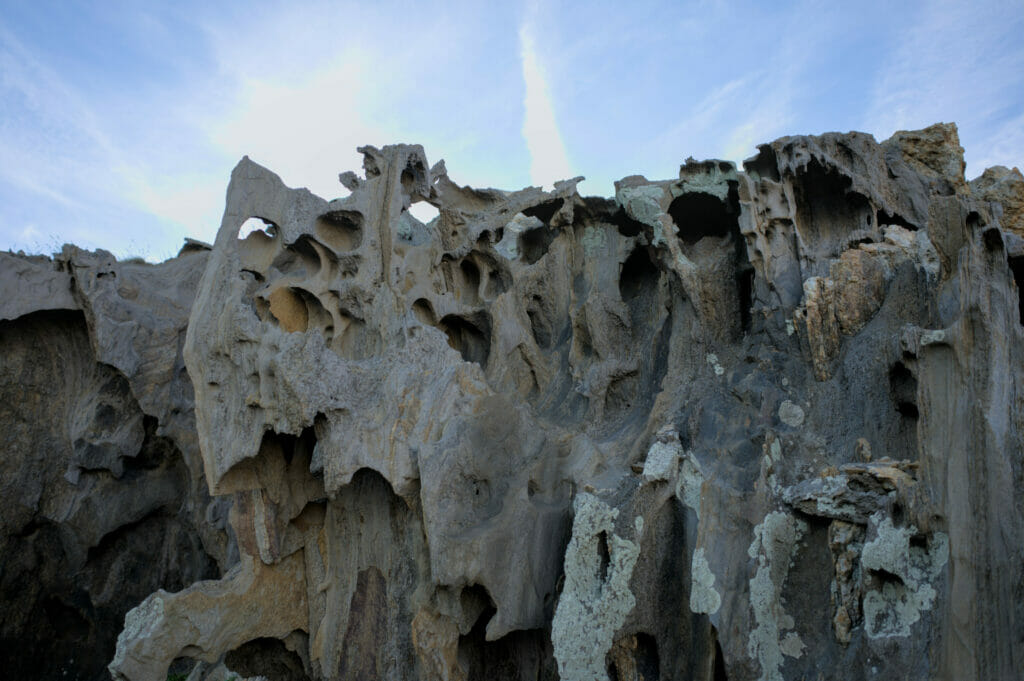
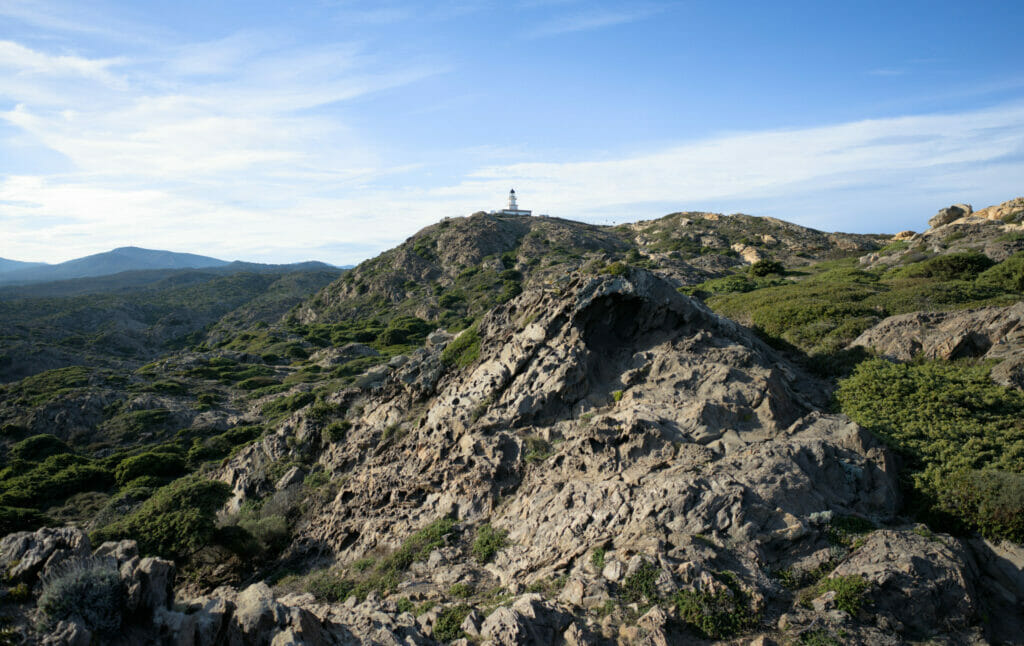
The map of our little walk:
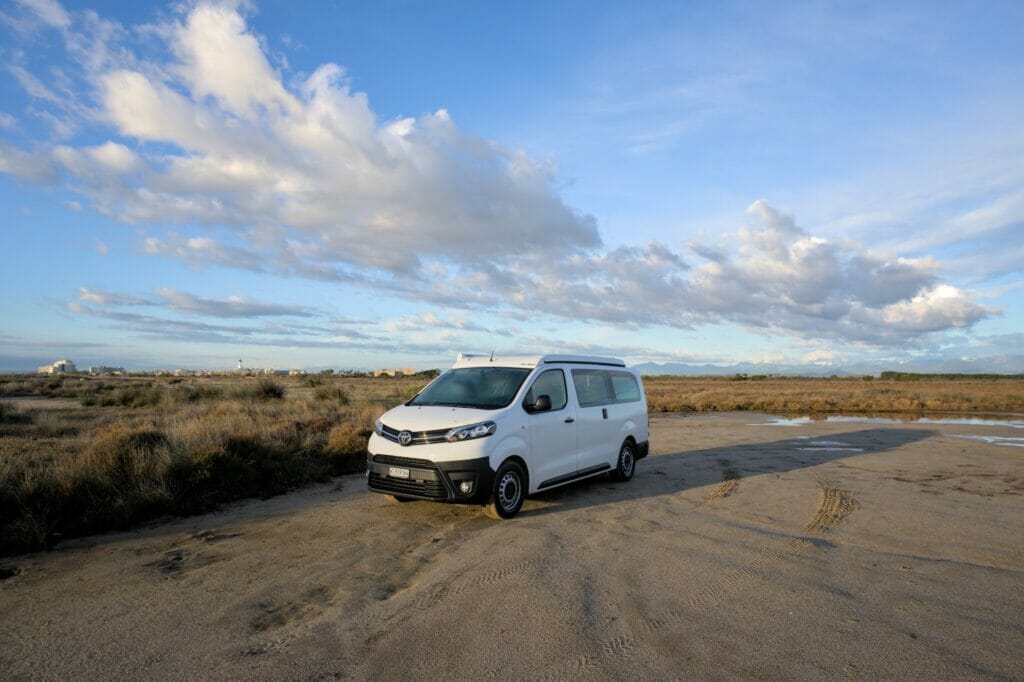
After our hike, we took advantage of the pretty terrace to drink a coffee and we set out again to find a spot to sleep for the night. Being in van, we absolutely wanted to leave the natural park. It is indeed strictly forbidden to spend the night in its vehicle in the enclosure of the park. Out of season, there are obviously many people who do it, but for our part we always respect these rules for the good and simple reason that it seems to us really important to preserve these landscapes (we even find rather good that such rules exist). In short, although we are always extremely careful not to leave the least trace of our passage, we do not sleep in the natural parks if it is forbidden (moreover there are plenty of options once we left the park) 😉
Note: If you are looking to rent a van, we recommend you take a look at our article on van rental
Cadaqués
Our mini-regret from Cap de Creus was that we did not spend more time exploring Cadaqués! This little town looked really charming but unfortunately we didn’t have enough time after our hike to do a “real” visit. Anyway, here are some pictures that should make you want to come and discover the area. For our part, this village is clearly on our list for a next visit!
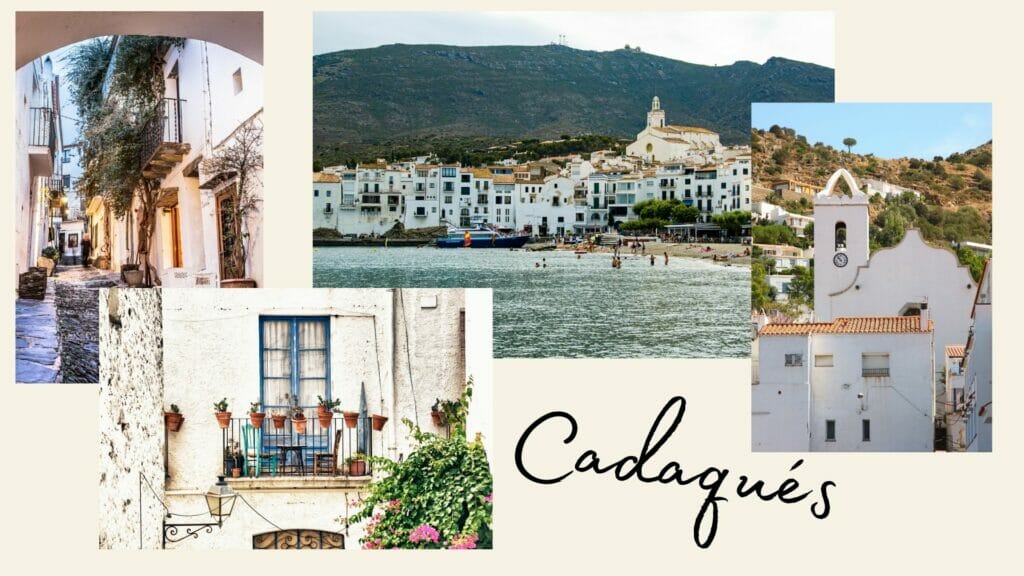
Besalu: one of the most beautiful medieval villages in Catalonia
Entering inland, our first small stop was the village of Besalù.
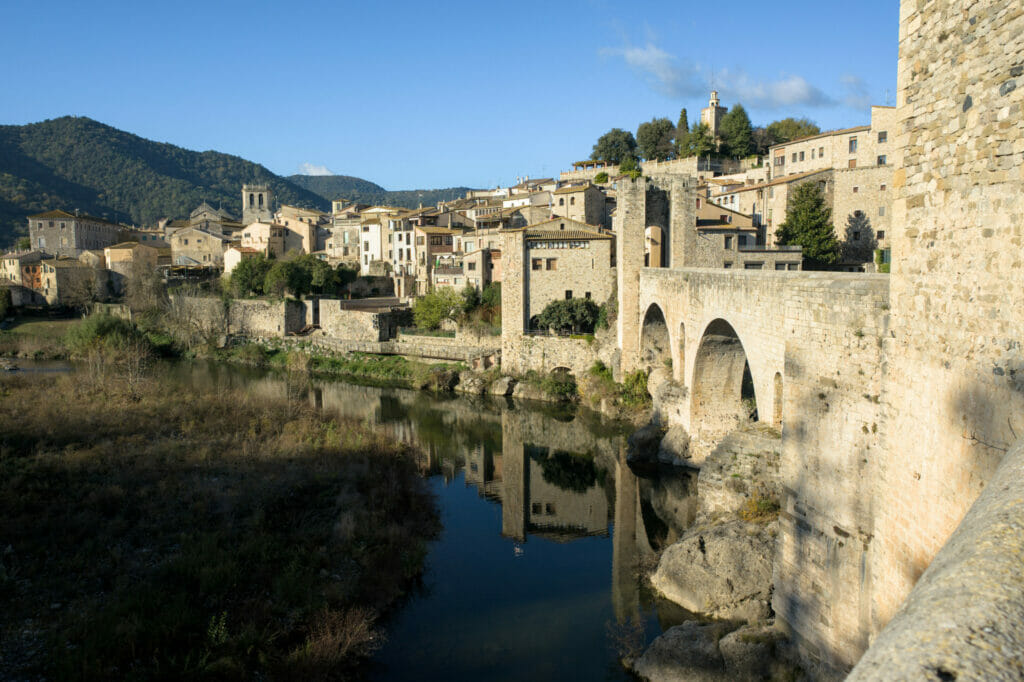
Located in the province of Girona, this town is known for its medieval architecture and its cobbled streets. We don’t have any particular recommendation to make for this town, except to walk around the historical center, passing of course by the old bridge that spans the Fluvia river. Next to the church of San Perre there is a lovely square with lots of terraces where you can have a coffee in the sun. All in all, we spent about an hour in the village and it’s a stop that is clearly worth the detour!
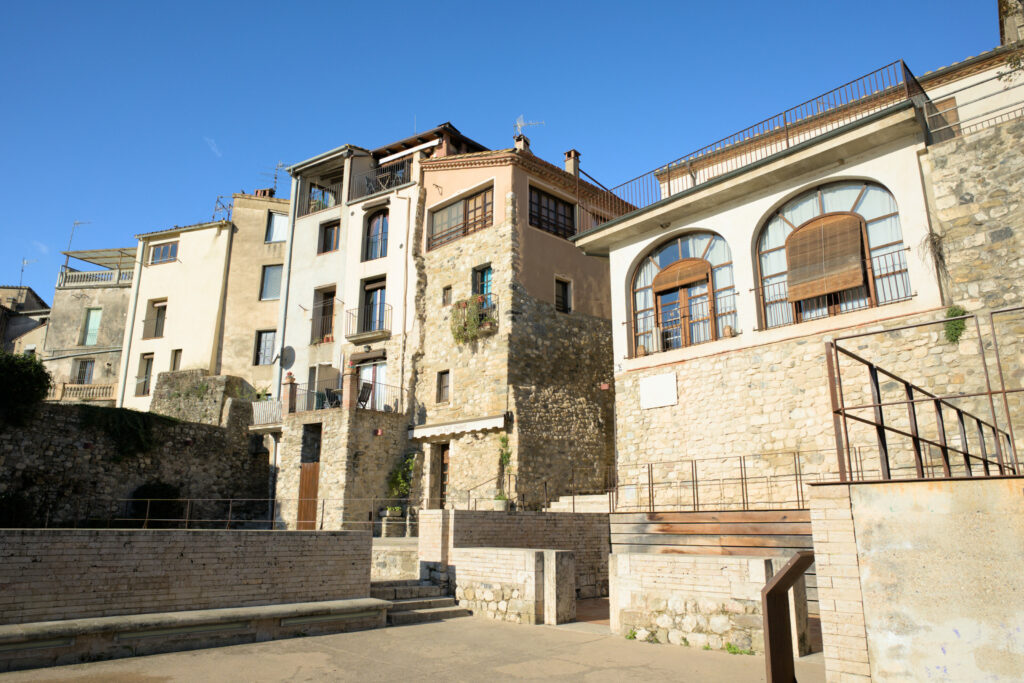
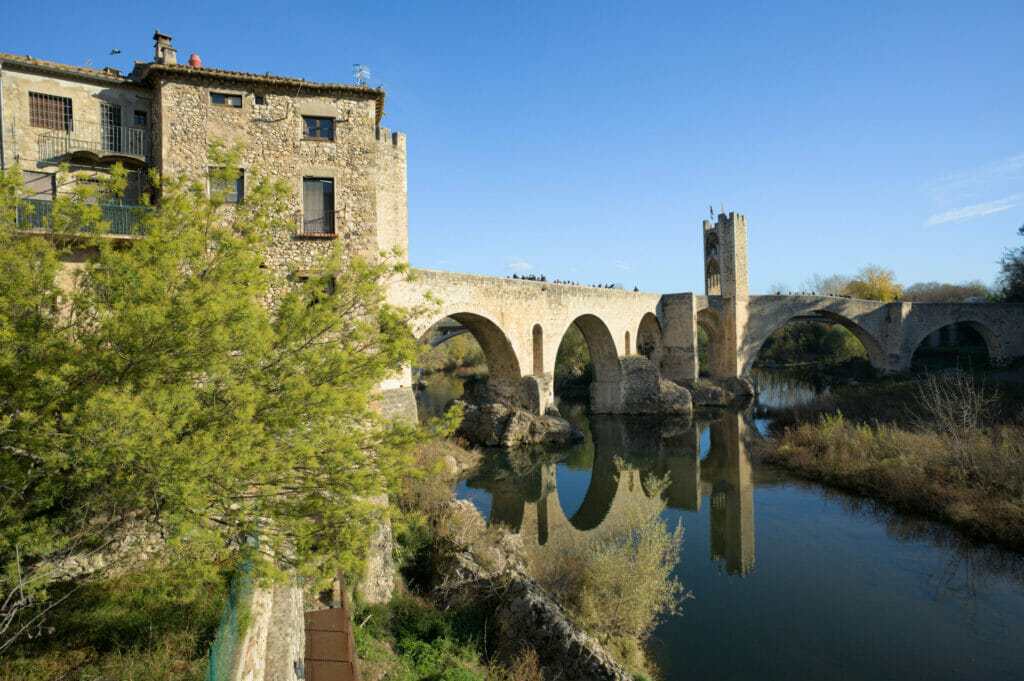
The village of Rupit
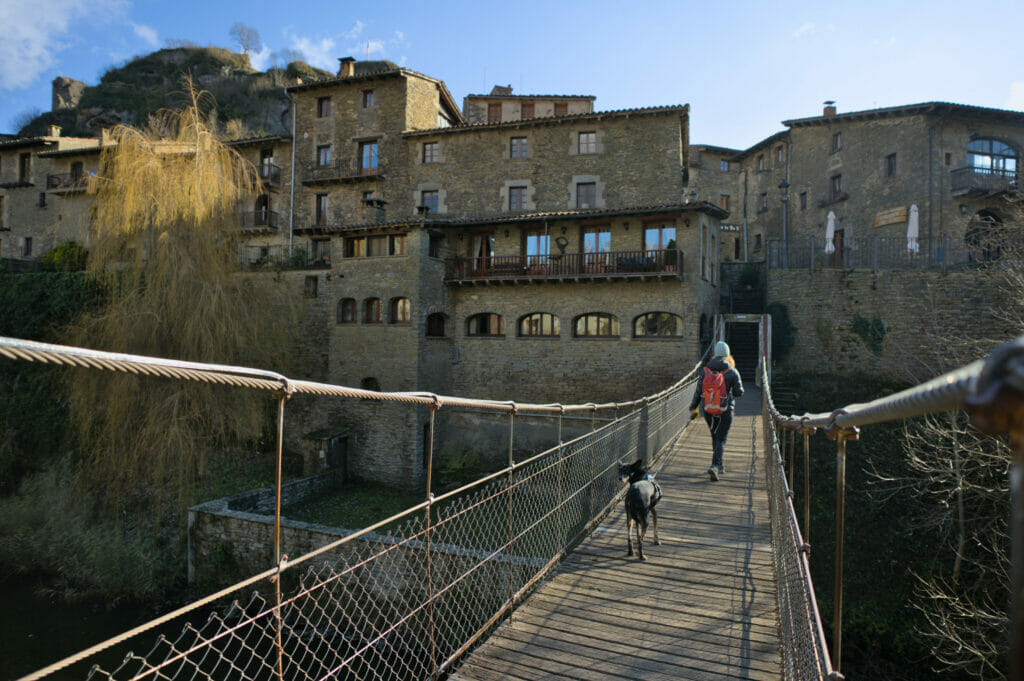
The next stop of our little roadtrip in Catalonia was the beautiful little village of Rupit. This small medieval city is not very big but it is so beautiful! We reach the old center by taking the suspension bridge which spans the river and we arrive then in the narrow lanes where we would almost have the impression that the time stopped. Entirely built in stone, the houses of Rupit are just splendid!
To visit the village it is compulsory to park on the large parking lot located at the entrance (only the 270 inhabitants of the village can go further). The parking is not free and its size makes us think that there could be a lot of people around here in high season… In the middle of December there were only about ten cars parked, but who knows in July. Oh, by the way, for the owners of converted vans, you should know that it is authorized to spend the night on this parking lot (public toilets and water at disposal, 7€ for 24 hours of parking).
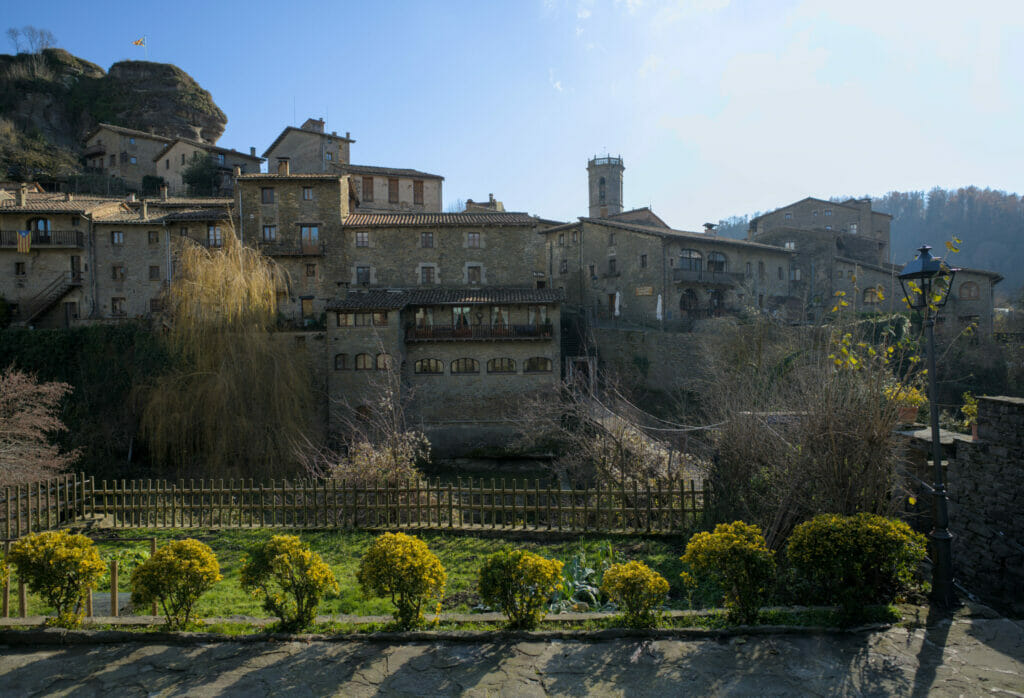
Hiking around Rupit
After our little tour in the village we went for a hike. The “classic” hike of the area consists in reaching the waterfall of Salt del Sallent. It is possible to make a small loop, but we clearly wanted to stretch our legs more and we decided to go on a bigger loop.

The first part to the waterfall is really easy to follow and perfectly marked (it is obvious that in high season there are many people using this path). And frankly we understand easily why, the waterfall is really splendid! We were lucky to see it with a lot of water. In summer, it is not rare that it is a little dry to what we heard 😉
From the waterfall we continued along the mountain with always a breathtaking view on the cliffs. There are moments we almost thought we’d be in the grand canyon!
When we arrived at a farm, we turned around. We were following a track found on Wikiloc and this one made us turn left at a certain point to go up towards the Castell de l’Envestida. As we went on, the path seemed less and less used. We hesitated a lot on the track to follow but it is without too much problem that we reached this sublime point of view!
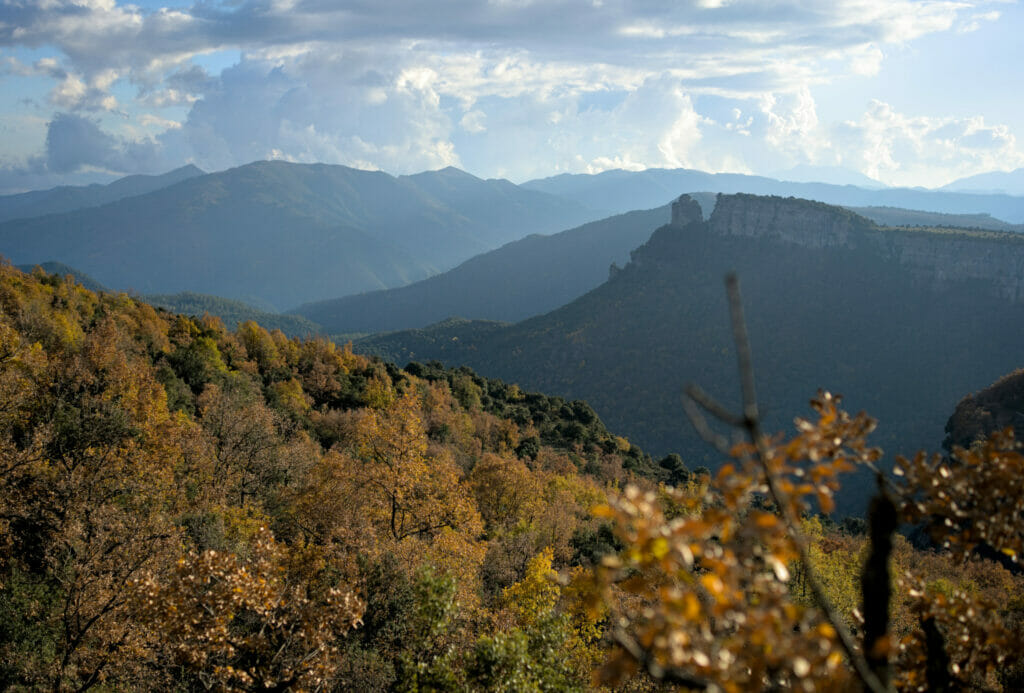
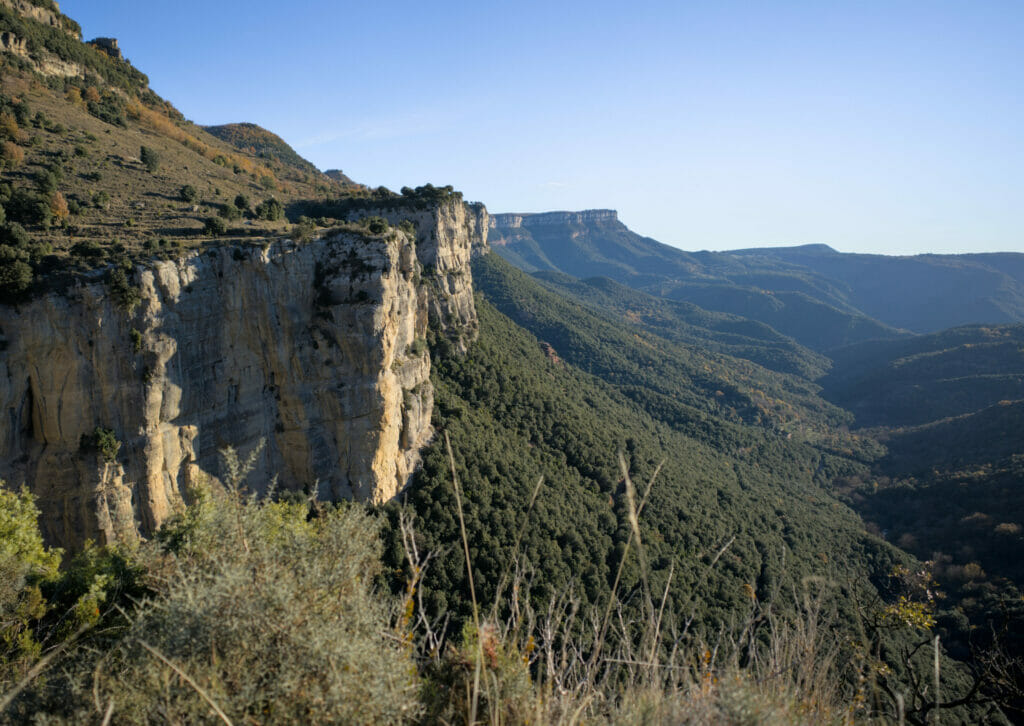
It was from this point on that things got a bit messy for us. After the viewpoint, our trail took us to the left to join a track that goes down to Rupit. Everything started well until the moment when we found ourselves in front of 2 rows of electrified barriers (not the simple wires as for the herds, we speak here of these big complete barrier). We briefly tried to find a way to get around “this problem” but we quickly arrived at the conclusion that the owner of this ground did not really want that the hikers pass by there. 2 patous not particularly welcoming who kept the ground will have finished to convince us.
At this moment we could have come back on our steps, but the problem is that the sun was going down in less than one hour and that we were clearly running out of time to make the whole way bac. We spotted a piece of cliff where people seemed to have gone up (we were not to be the first ones to be stuck). In short, we saw that above our heads passed another path and we thus decided to give it a go at climbing (with the dog in bonus). Clearly, this section is short (20-30 meters at most) but on the other hand it is hard! You have to hold on to the branches and rocks to get to the top. Once at the top we found a path and we could go down again without problem until Rupit just before the nightfall. Pfiouuu…
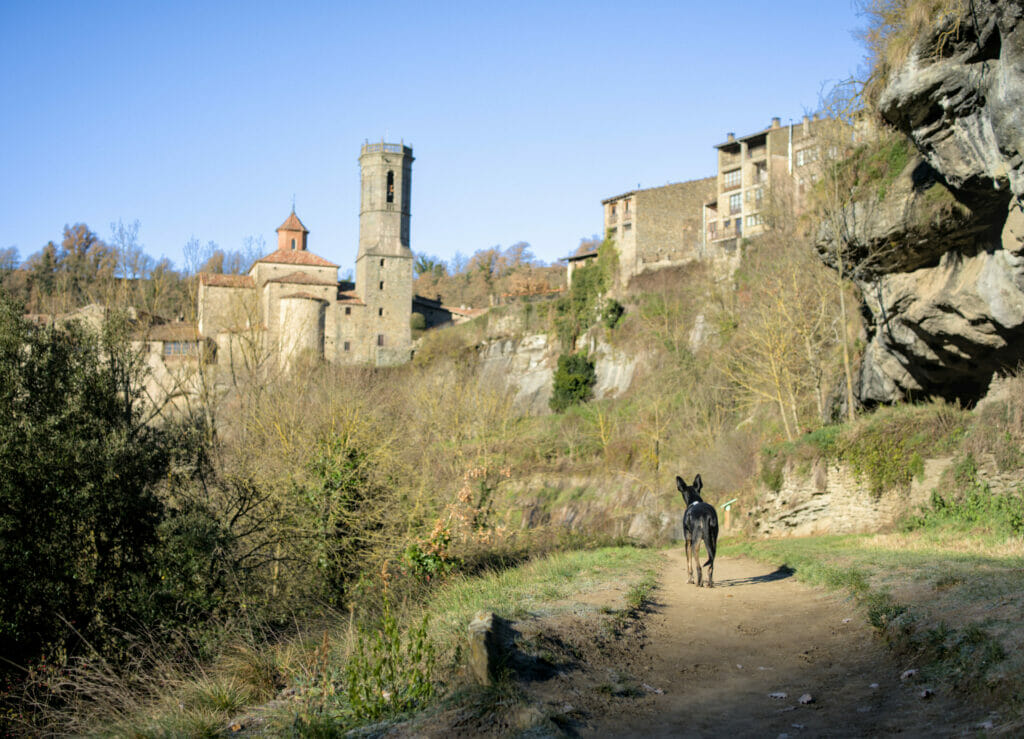
Map of our hike (be sure to read the additional information below!)
- Red itinerary: the recommended itinerary (we did not follow the detour that avoids the purple end, but no doubt it is easier)
- The purple route: the one we followed. After the viewpoint, we wanted to join the red path by following the path indicated on the map. The problem? the 2 rows of electric fences and the patous. In short, we went straight up at a spot which is clearly not “officiel” to join the upper trail. Is it feasible? Yes, we did it (with our dog as a bonus). Is it for everyone? Probably not… if you’re not sure of your footing and/or you have trouble putting your hands up for a few meters, then don’t follow our purple route and take the red one instead.
The Foradada waterfall (Salt d’Aigua de la Foradada)
Not far from Rupit and Tavertet is the Foradada waterfall. We had seen a picture online of this small lake in the middle of the rocks with its waterfall and its “window”. Coming here in December, we unfortunately can’t tell you too much about how it is to swim in here (even if we don’t doubt that in summer it must be absolutely amazing) 😉 This stop is quite cool for families (or dog owners in need of a little walk haha). To reach this waterfall there is no choice: you have to walk a little. A small parking lot is available next to the Cantonigros soccer field and from there you have to take the path that goes down to the waterfall. 1km and about 140m of difference in altitude later, you’ll be in front of this:
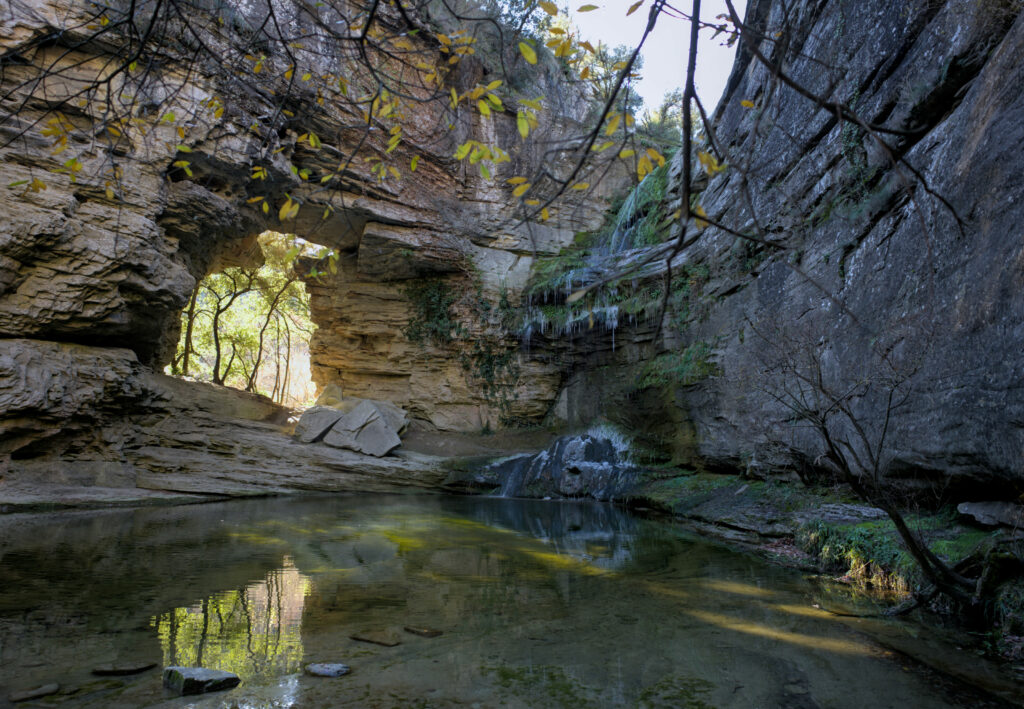
If you are in the area we really recommend this little stop! In winter we didn’t get much sun once we were down there, but we can easily imagine that the rest of the year this place is even more magical!
Map of the walk to the waterfall of Foradada:
Tavertet and its viewpoints
After Rupit, our next stop was the village of Tavertet. This village was a little less “nice” than the previous one to tell you the truth. I don’t know, it’s a bit too “square” and clean… It looks more like a tourist village (deserted during our visit) rather than a place where people actually live. Maybe we are wrong, but let’s just say that we found it less charming. After, Tavertet remains nevertheless a “MUST”. The village is not as nice as Rupit, but the landscapes which surround it are just splendid!
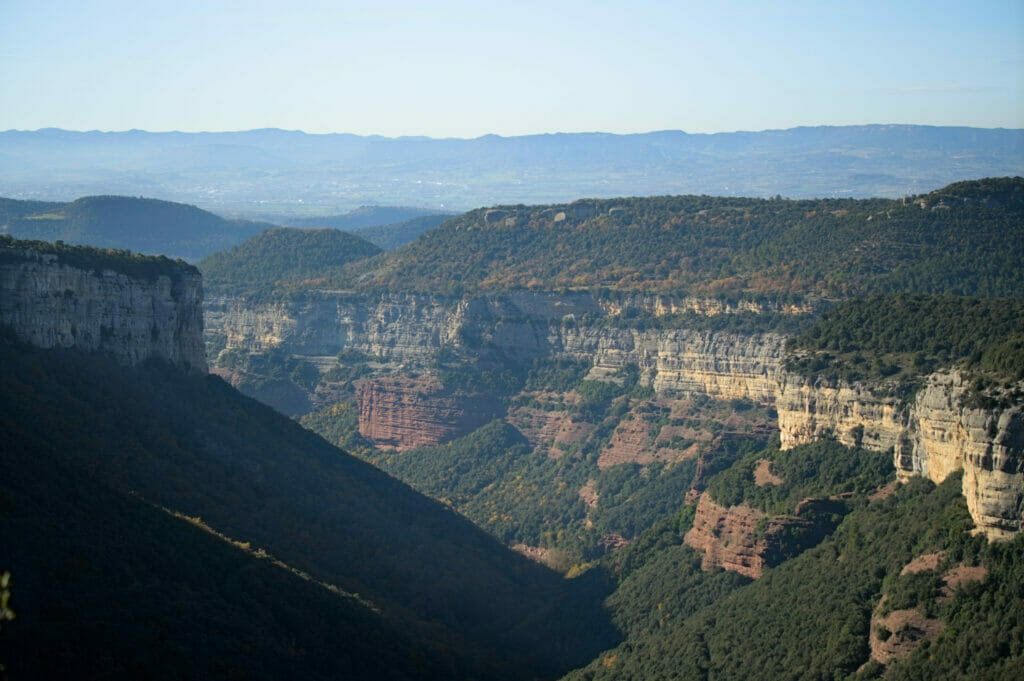
The morro de l’abella
If you come to Tavertet there is a point of view that you should not miss: the morro de l’abella! Located at 5km from the center of Tavertet, it is possible to get there by following the hiking trails. However, you should know that on this route there is a short passage with ladders. If you don’t suffer from vertigo this should not be a problem. For us, this hike was unfortunately excluded, because ladders and dogs do not mix well. As much Winchy can climb everywhere, as much climbing a ladder is not an option (and no, the idea of carrying his 20kg that wiggles in all directions to climb a ladder is not an option) 😉
But anyway, if like us you have already done enough hiking (or you don’t want to use the ladders) it is possible to come and park on the small parking lot that is nearby along the main road.
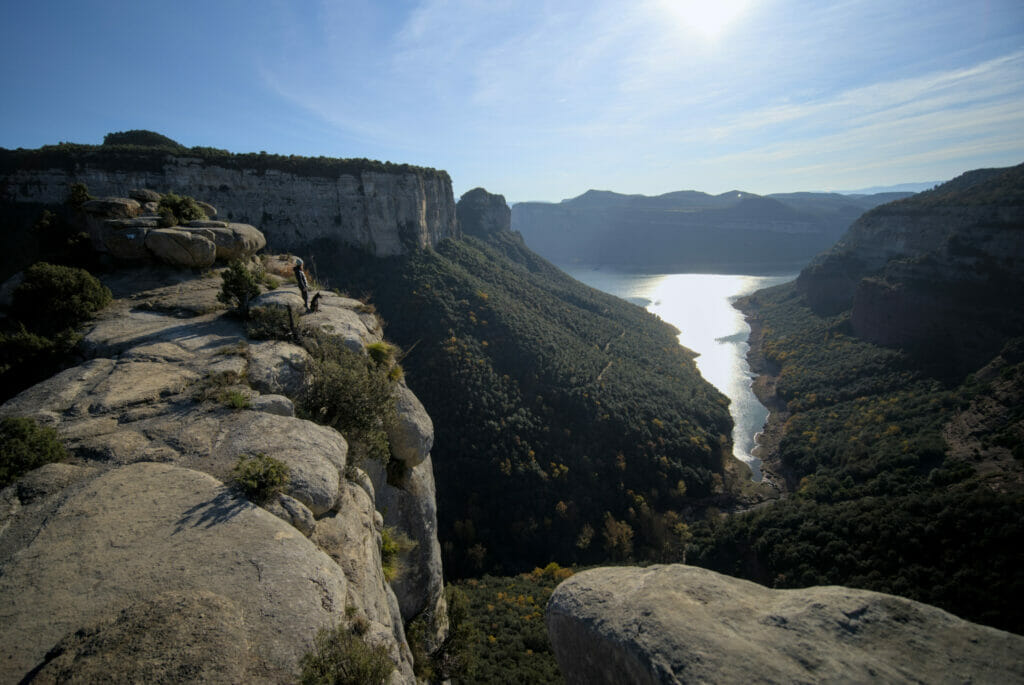
A short stop at the Catalan Horseshoebend: the mirador del Ter
As we left Tavertet, we made a brief stop for one last viewpoint. This spot had been recommended to us by Morgane via Instagram (thanks @morgane_fw). A 15 minute mini stop, but well worth it if you’re in the area and want to see a mini “horseshobend” in Catalan version 😉
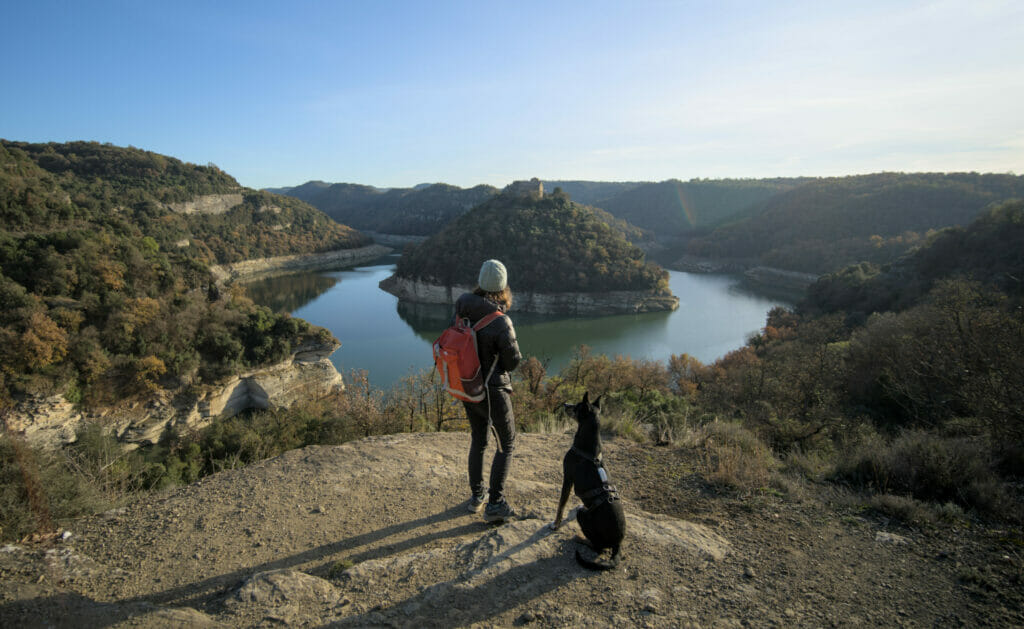
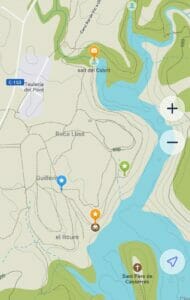
- This is not a walk, but just a brief stop to see the view.
- The access is through what looks like an industrial area, no worries it’s normal 😉
- Here are the GPS coordinates of the place where you can park: 42.005317, 2.335576 (enter these coordinates as is in Google Maps). It is the blue point on the map opposite
- On the right is a screenshot of our Maps.Me. The green dot is the one from which the picture was taken. Going to the waterfall doesn’t take very long but we didn’t think this was a “must-see”.
The Natural Park and monastery of Montserrat
We had already been to Barcelona a few years ago and decided to skip the city. For this roadtrip we really wanted to focus on the more natural places, and we’re so glad we did! While looking for the best itinerary to “bypass” Barcelona, we came across some blog posts talking about Montserrat. Easily accessible from the Catalan capital, this mountainous massif is simply a must-see in the region.
So I’m not going to detail here our hiking itinerary and the “logistic” details because Benoit is currently preparing an article 100% dedicated to this place! (the blog post is out and you’ll find the link just below) But in the meantime, here are already some pictures of this absolutely magical site.
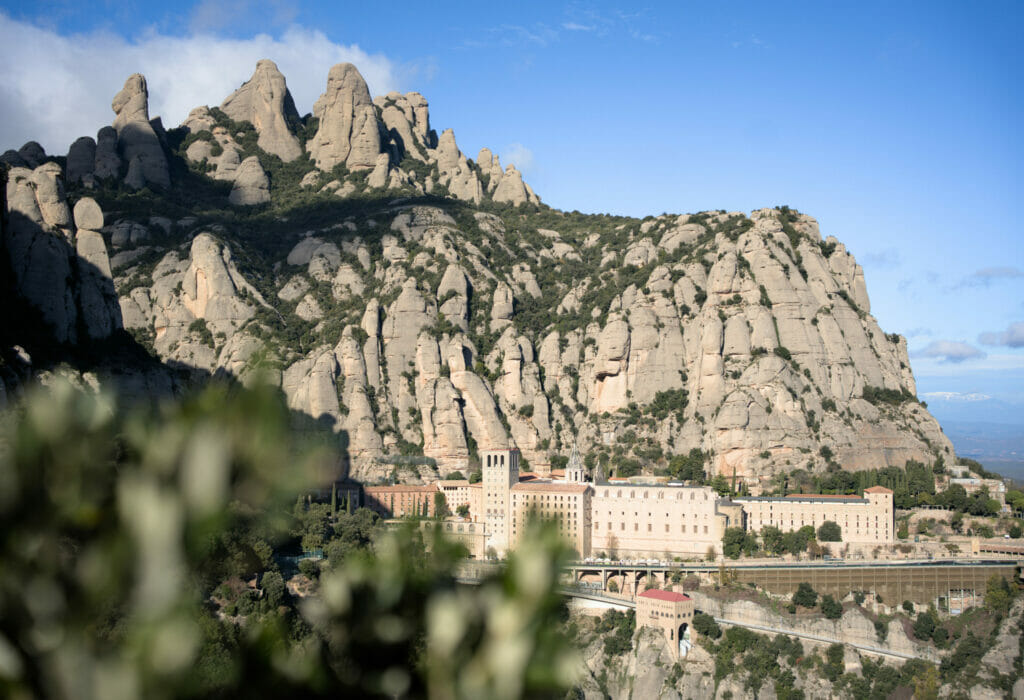
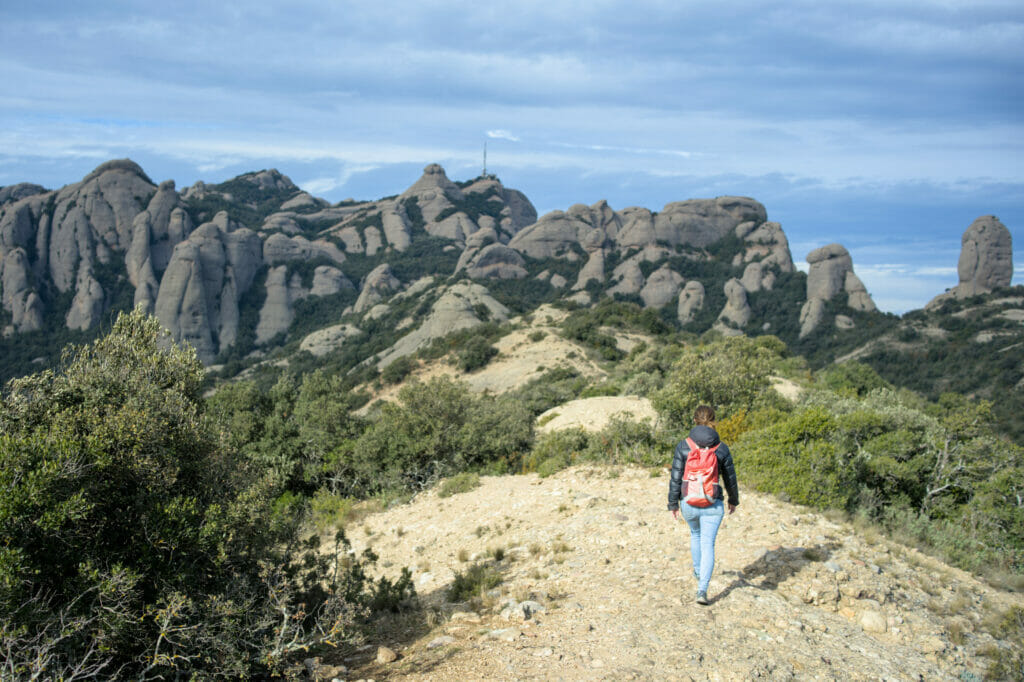
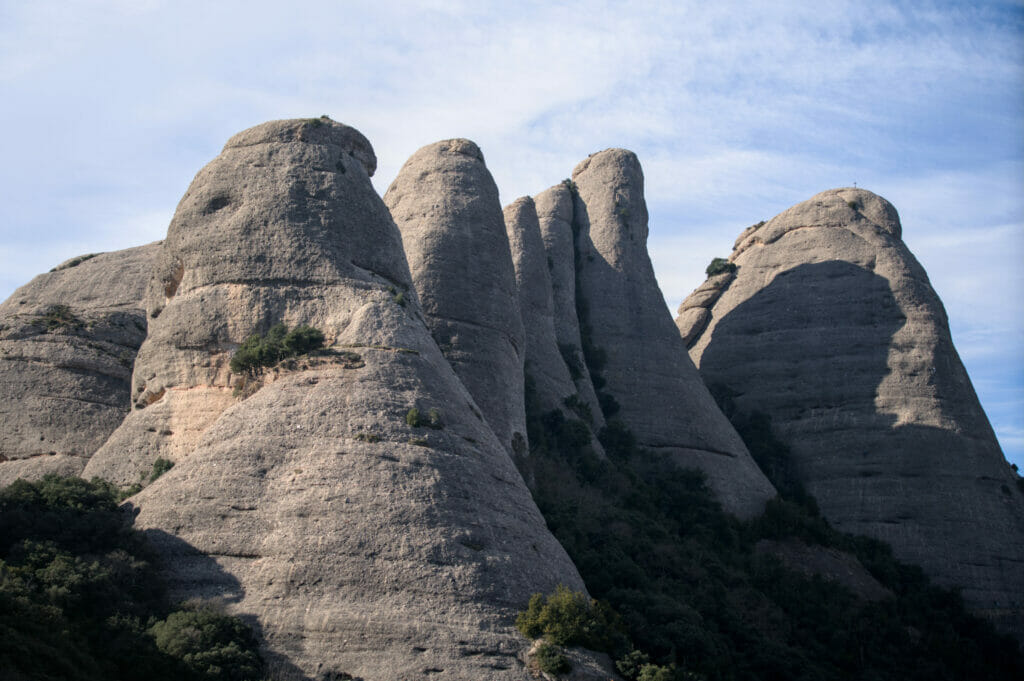
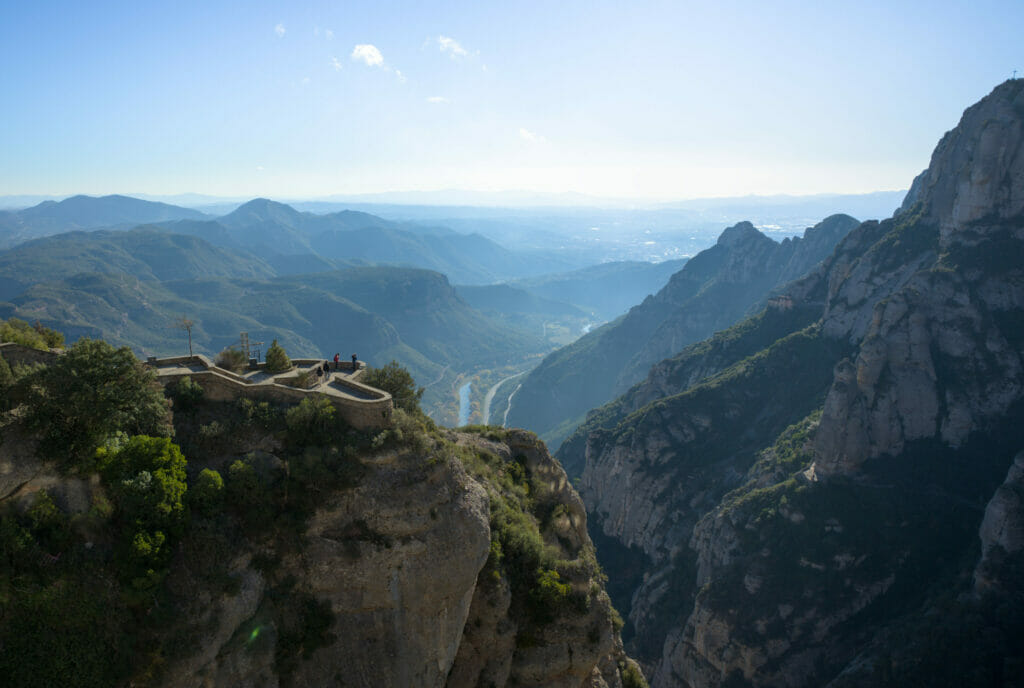
If you are traveling through Catalonia or passing through Barcelona, we highly recommend planning a day of hiking and visiting Montserrat.
A warm break in Tamarit – Catalonia by the sea
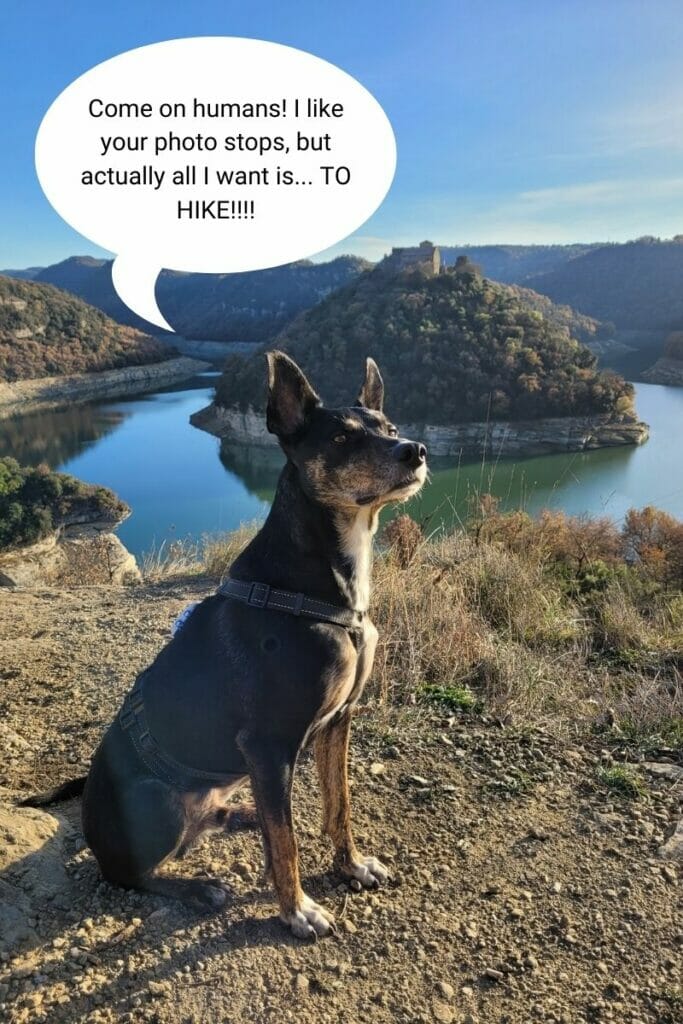
After a few days in the mountains where the night temperatures were well below 0°C, we decided to stay a few days “in the warm”. To do so, we headed to the coast in search of an open campground where we could work for a few days while having some nice options to walk the dog (because yes, our gentleman wants to have at least 2 hours of daily walk 😉 )
After some research, our choice fell on the small seaside resort of Tamarit. So we will be honest from the start, the campsites of seaside resort it is NOT AT ALL our cup of tea. Animations all day long, small bracelet to be worn H24 to be “identified”, more than 1000 pitches, small train pulled by a tractor which circulates in the camp-site so much it is big… Pfiouuu… It’s pretty close to our definition of a horror vacation!
BUT, being beings full of contradictions, we still loved this stop! Why? In December the campsite was not full, the location close to the beach and the numerous hiking trails around was great, it was 12°C at night and almost 20°C during the day and… the campsite had a wifi that pulsed at 200 MB/second (needless to say that it’s just huge, we’re far from having that at home in our little mountain village). In short, the Tamarit campsite would be a big no-go for a vacation, but for a work-dog walk break with mild temperatures out of season it was great.
Here are some pictures of our little interlude by the sea (and we warned you, Tamarit is certainly touristy, but it is also very beautiful).
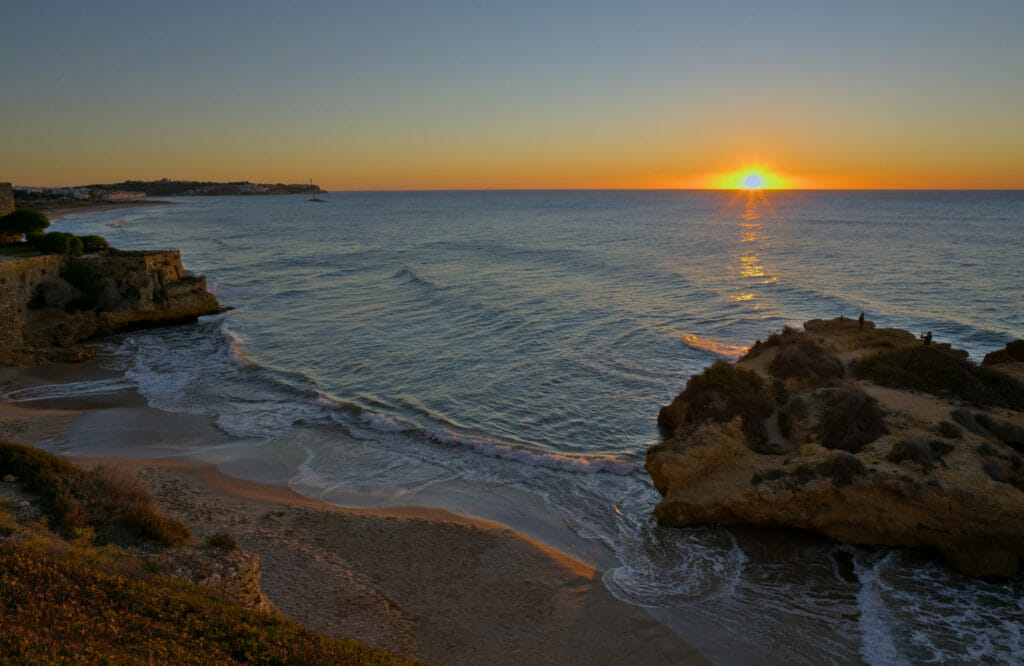
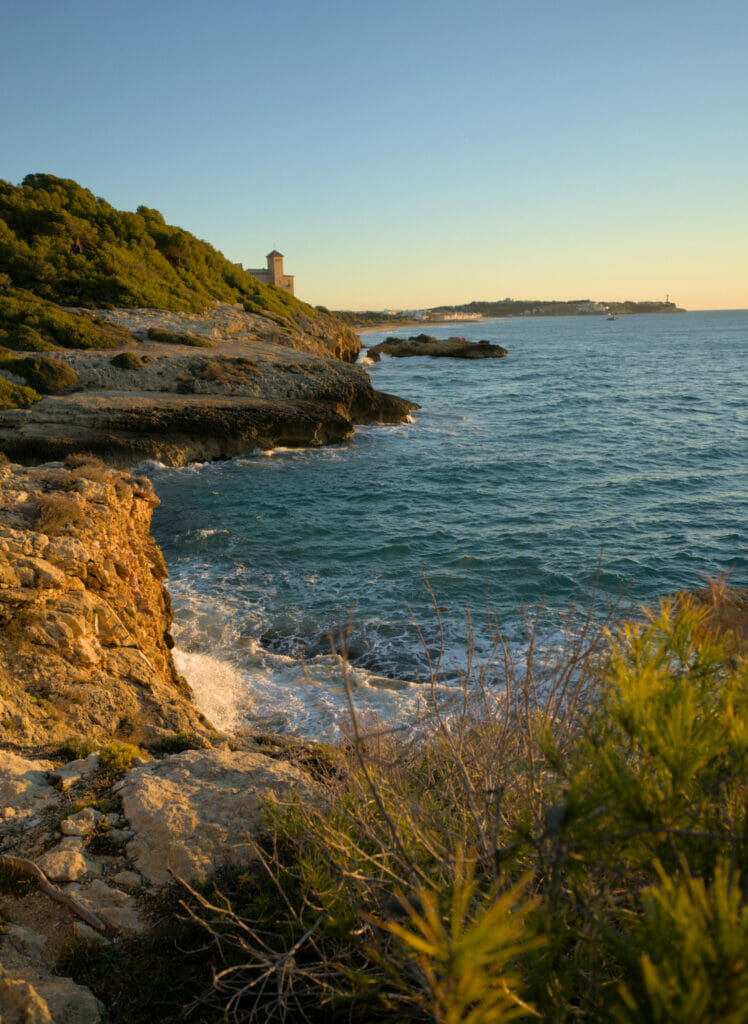
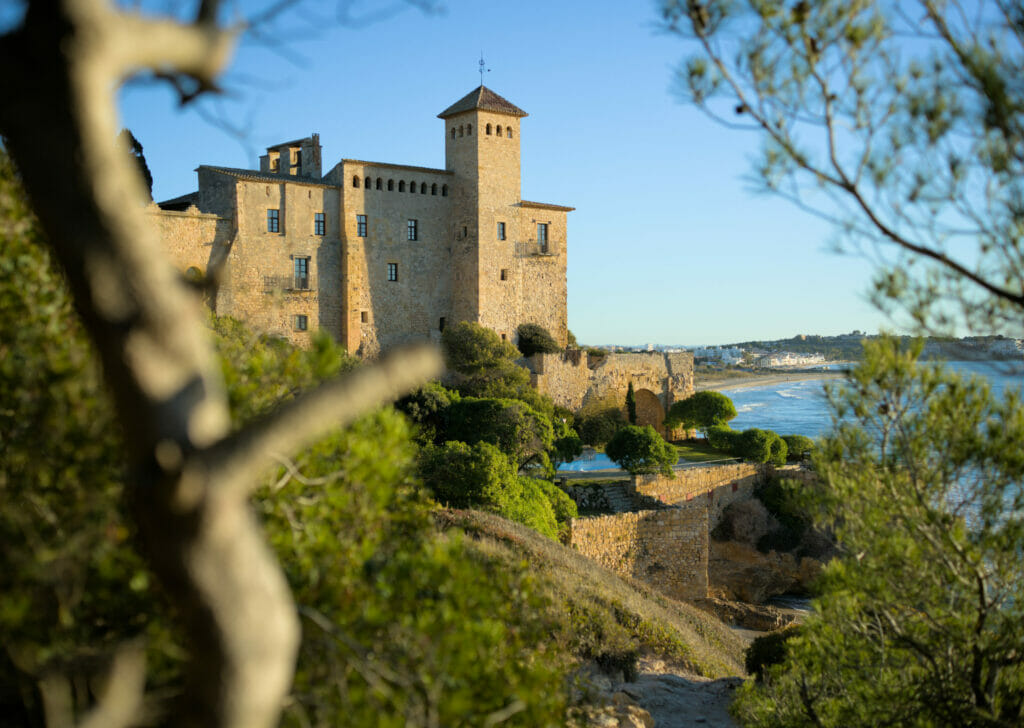
Siurana: The paradise for climbers and wine lovers in Catalonia
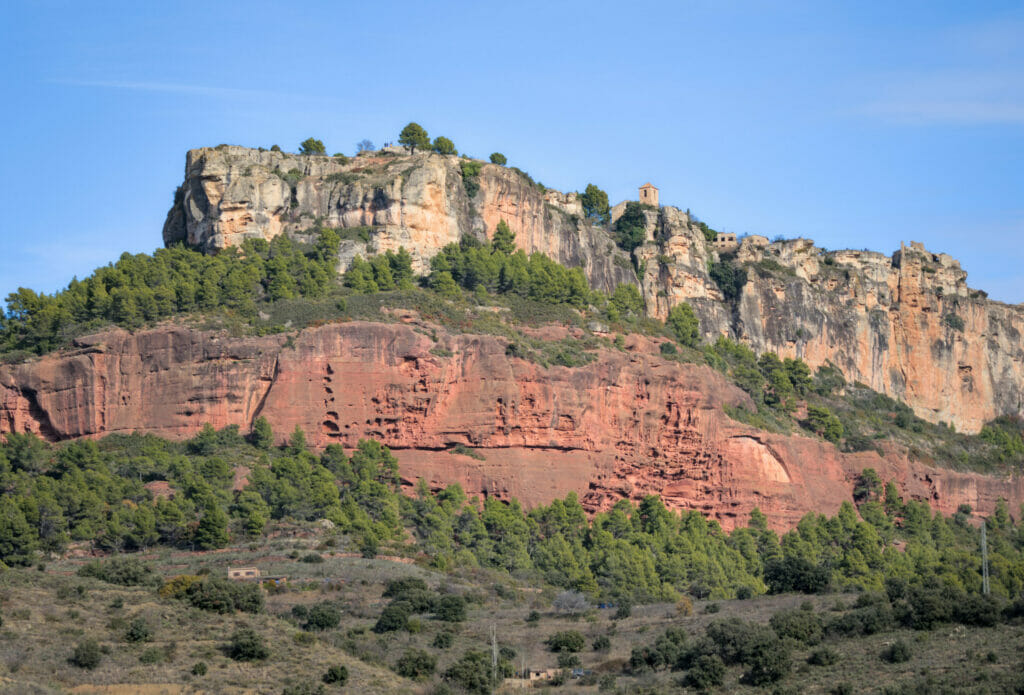
After these few days of working on our computers, we decided to make a radical change of scenery and went in the direction of Siurana. We will be honest with you, if we had spotted Siurana it was for its small medieval village perched on top of a mountain but also because we had read that they produced very good wines there (yes yes we are easy to convince).
When we arrived with our van, we quickly realized that there was more to it than that. In the middle of December and during the week, every little space on the road going up to the village was occupied by a van, a camper or a motor home… Since our departure we had never seen so many of them in one place. Quickly, we realized that all the people (or almost) that we met were wearing a harness and a rope! Ehhh yes, Siurana is also a spot of climbing rather famous and it is clear that when we see the cliffs we understand easily why! We looked a bit on Instagram and it seems that a lot of great climbers have already been there! There are routes for all levels, but the most experienced ones apparently find there something to enjoy.
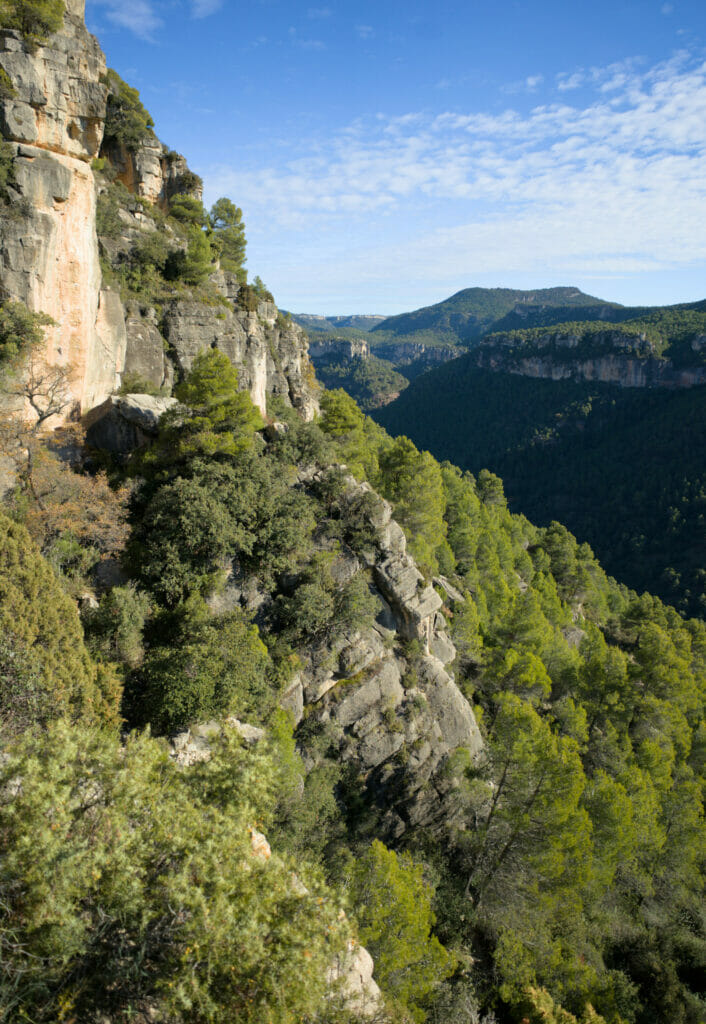
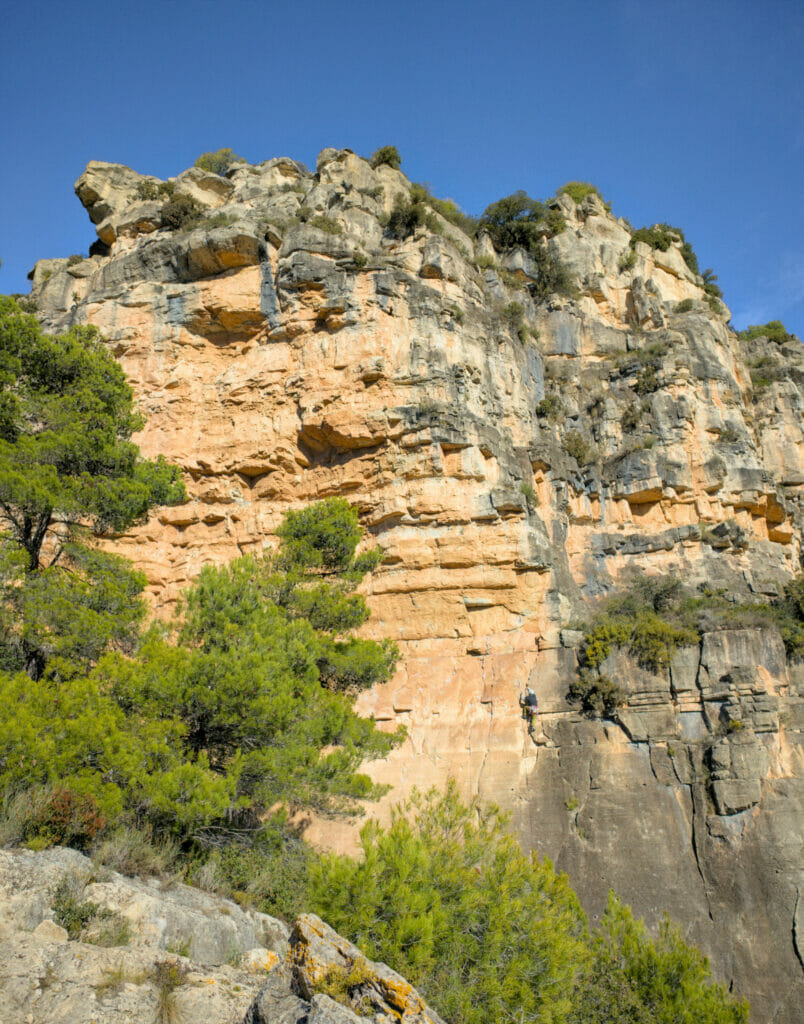
We are not really climbers (maybe it will come one day from spending so much time in the mountains???) but clearly, we understand why this spot is so appreciated! It is really splendid!
Our hike around Siurana
Well, for lack of climbing we did what we do best: hiking! 🙂 We’ll put the map of our itinerary below, but roughly speaking we did a great loop starting from the village.
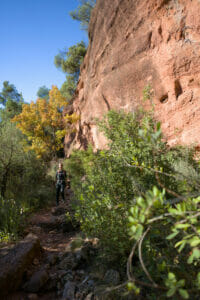
Starting from the large parking lot before the village, we joined the trail.
Note: On the map we have put the itinerary that goes back through the village. You will notice that a path allows you to join the route more “directly” from the parking. A path indeed, but it is VERY steep in places, so if you are not comfortable with heights, go around following the red trace on the map below.
The first part of the walk made us dive along the cliffs until we reached the Rio de Siurana, then the lake. At our passage there remained extremely little water and we were able to cross without any problem in the bed of the river. A path (and a bridge) are however present in case there would be more water during your passage.
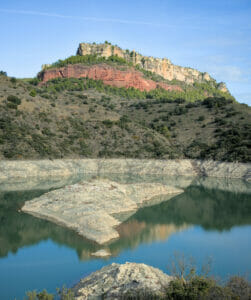
Arrived at the edge of the lake, we go up a track to make the tour of the lake and to join the dam on the other side. This section is very nice because it offers a very interesting perspective on the village “seen from below”. It is crazy to see to which point it is perched in the cliff!
From the dam you have to follow the road for a good kilometer (very little traffic) and then, at a bend, you find a path that goes down to the river bed. Here too it is possible to cross when the water level is low (or else you have to make a small detour along the edge of the lake). Once on the other side of the river, you just have to go up the 300m of difference in altitude that separate you from the village. The trail is very well marked and it is without concern that we arrive at the doors of the old center.
Map of our hike in Siurana:
Siurana village
At the end of the walk, we made a small tour of the village. And it is undeniable, the houses and the panorama are grandiose! But it still seemed strangely empty to us… In fact, it is especially the contrast with the huge parking lot which is funny. The village has only about 30 houses and 29 inhabitants, but the parking lot (paying) at the entrance can welcome hundreds of cars.
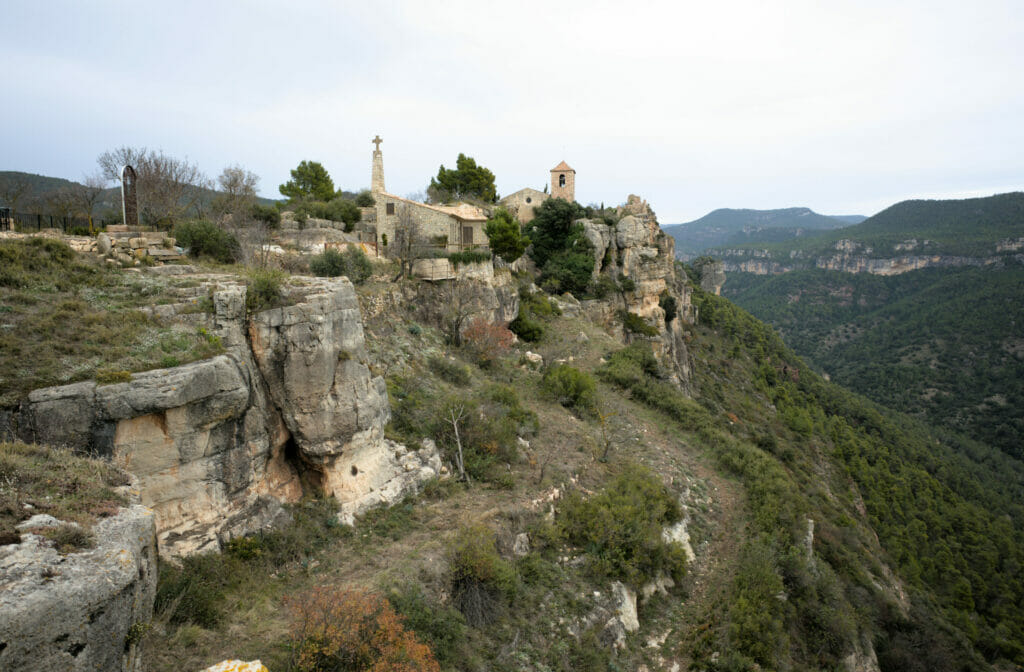
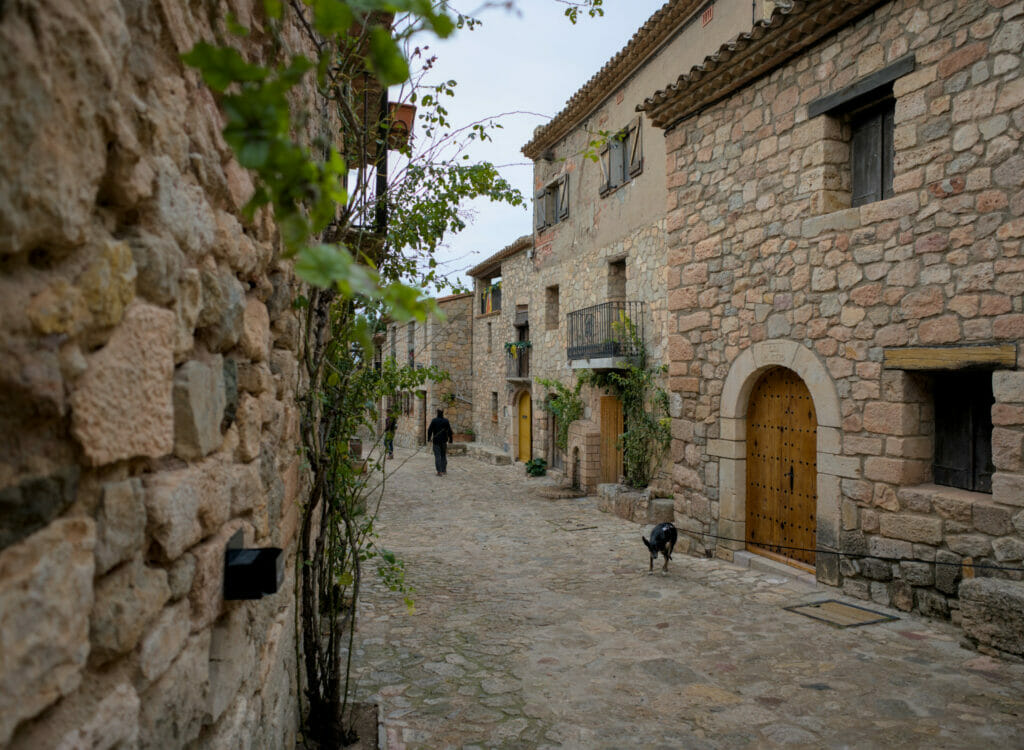
Out of season, we had the village to ourselves, so to speak, but let’s just say that it’s not hard to imagine that in high season it can give a completely different impression.
The castle of Miravet
We came to Miravet castle to spend the night (vans are allowed outside the castle opening hours) and phew… what a great spot! Perched above the Ebro river, this castle built by the Templars in the 12th century is clearly worth a look (or at least for its view at sunset and sunrise 😉 Since we left before the opening, we unfortunately can’t tell you if the visit itself is worth the detour, but if you travel by van, this place is not bad at all 😉

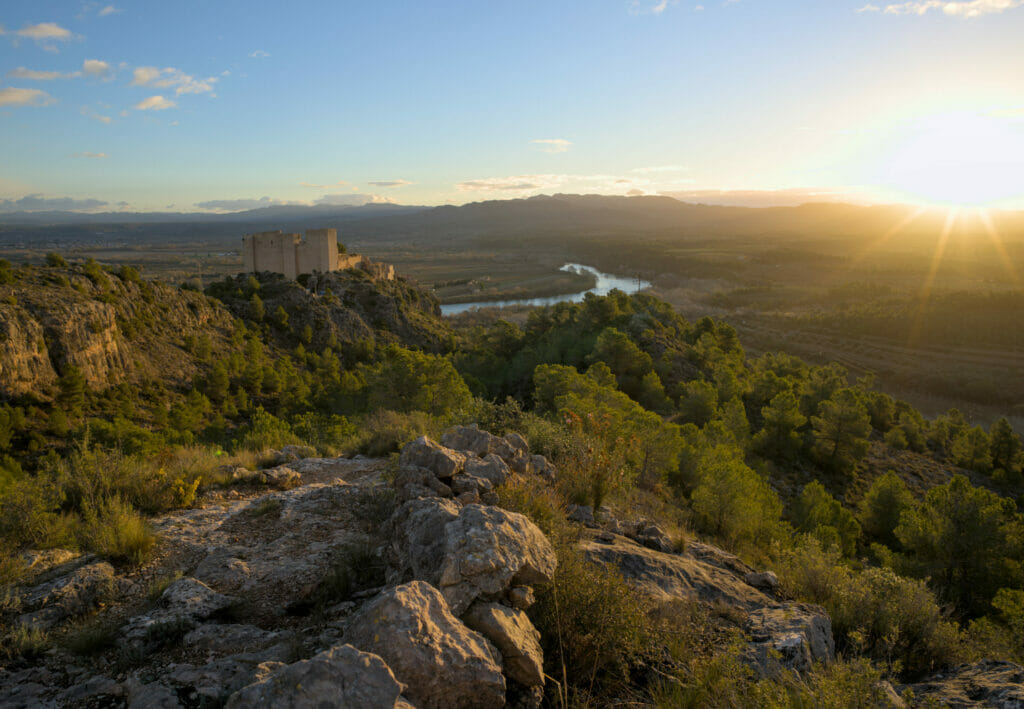
Fontcalda
Not far from Miravet there is another place that we will simply call magical: Fontcalda! A small hot spring in the middle of the mountains, next to a river that has carved beautiful gorges and a sanctuary lost in the middle of “nowhere”. A few pictures seen online were enough to convince us to come and see this place more closely.
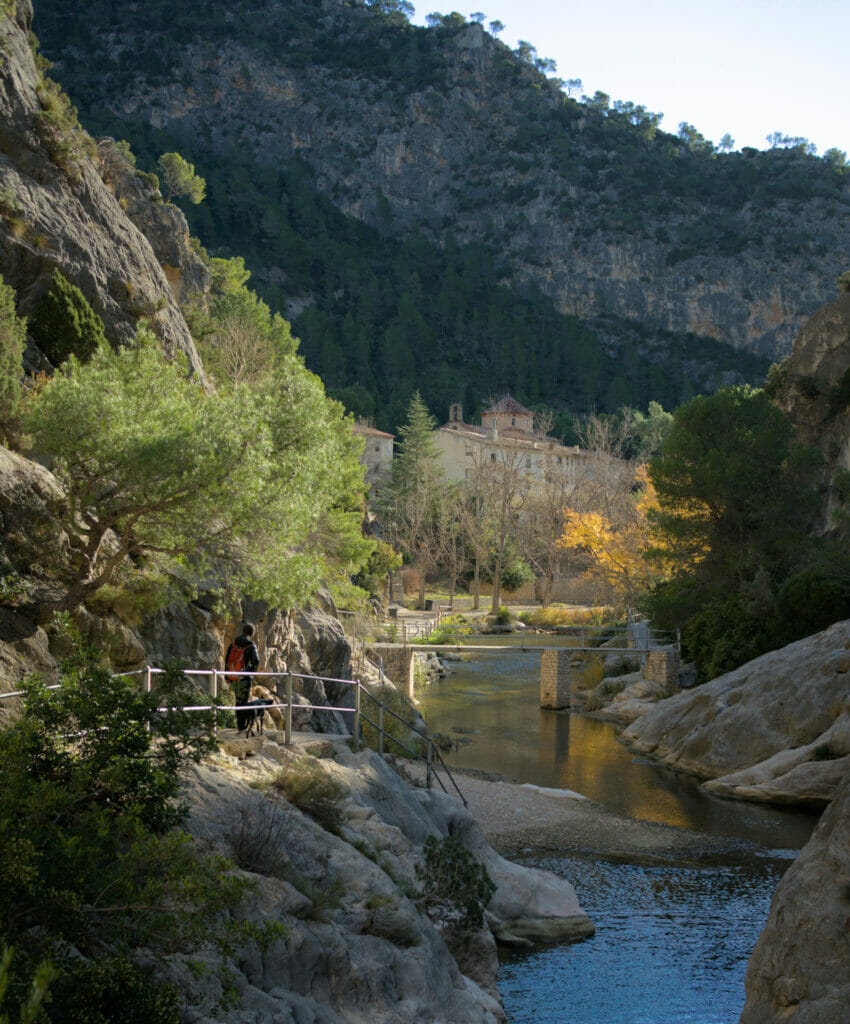
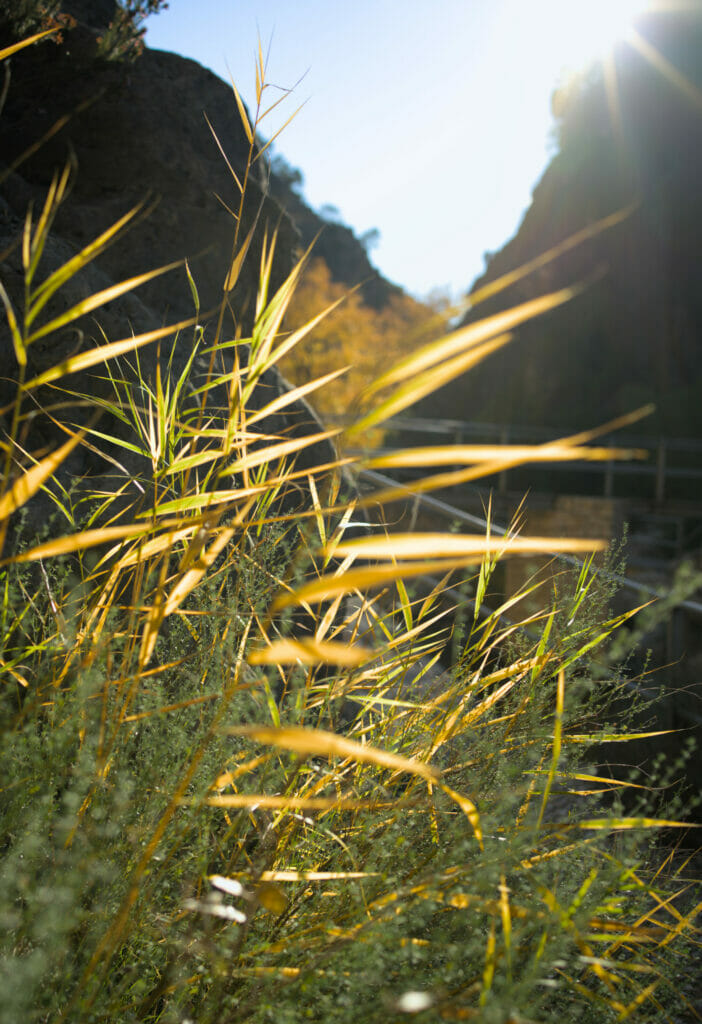
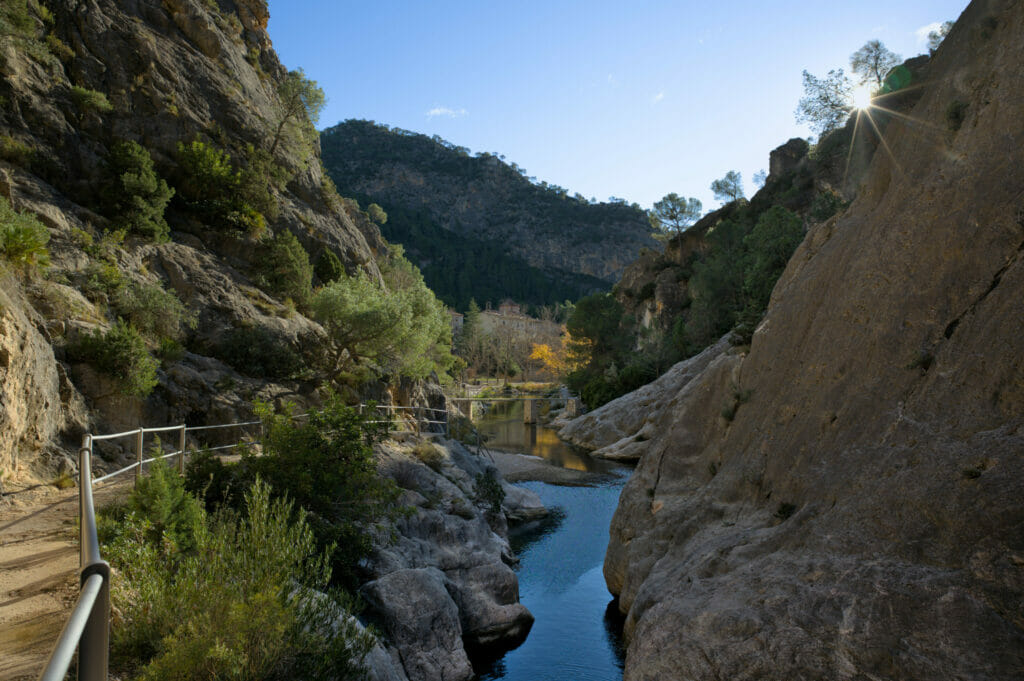
This site in the middle of nature is ideal for hikes and bike tours. During our short visit we obviously saw only a tiny part of what there is to discover. We left there thinking that this is a place where we could have easily spent 2-3 days exploring the surrounding peaks and trails. If you’re on a bike, then this is heaven too! The old railroad line that used to pass through here has been completely transformed into a greenway and connects the village of Arnes to Pinell de Brai over a distance of 27km through many tunnels and viaducts.
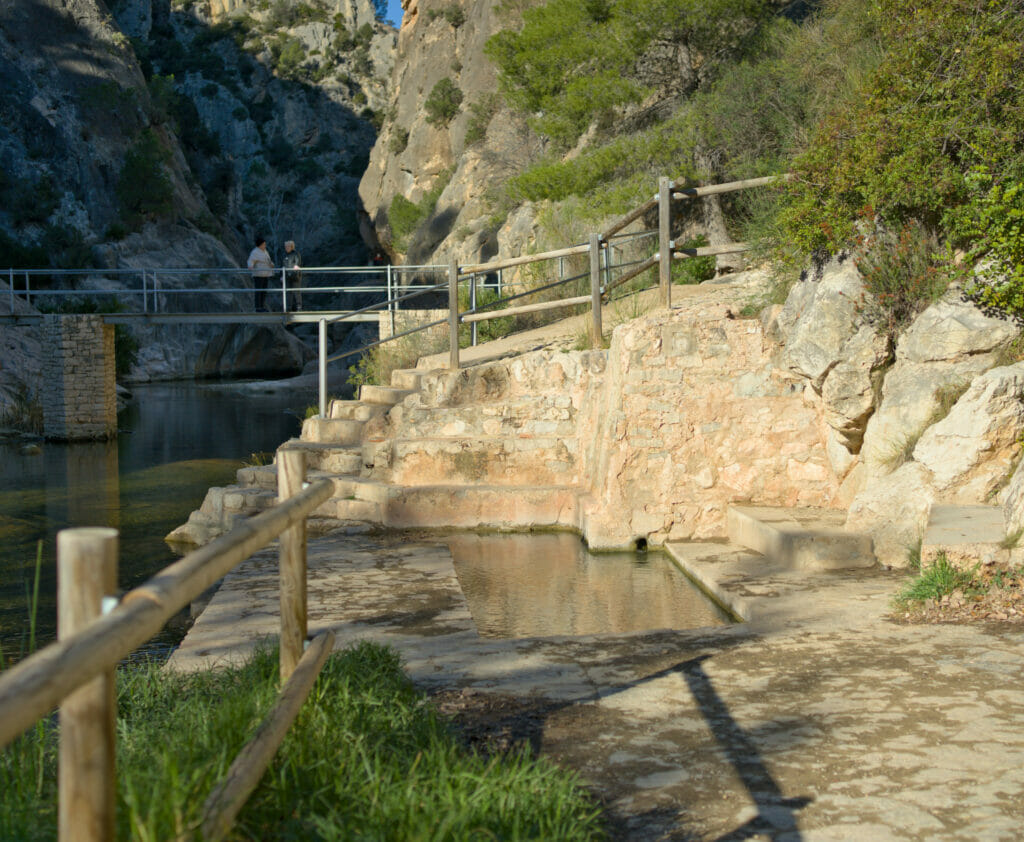
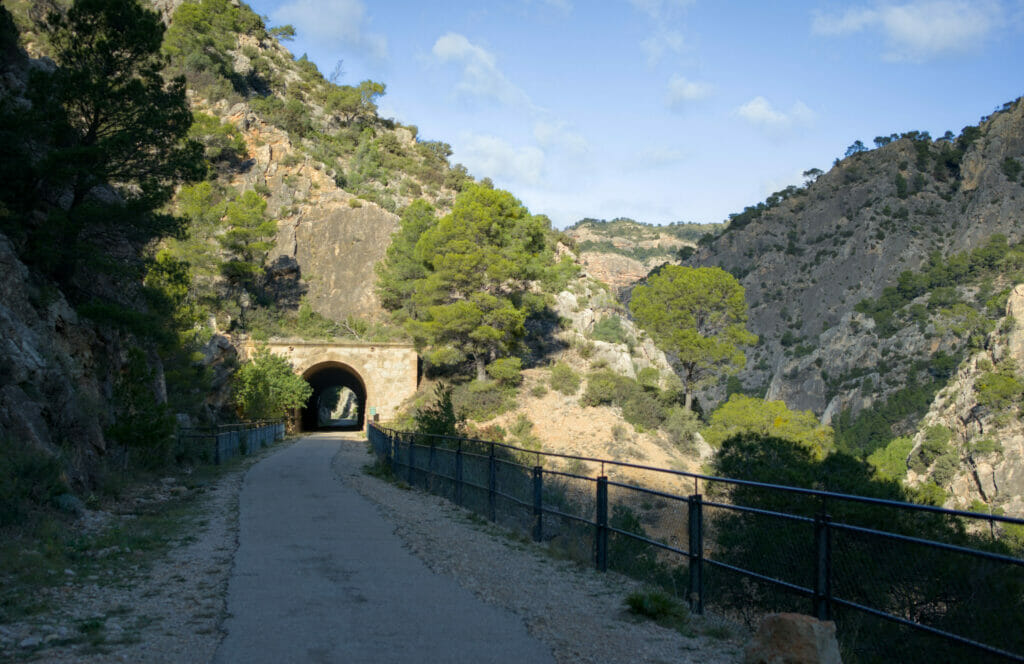
When we read the reviews on TripAdivsor we almost cancelled our visit. The reviews were unanimous: the site is beautiful but the road is ATROCIOUS! We looked on Streetview and indeed, the road that leads to Fontcalda seems quite difficult (at least for a van… let’s not even talk about a camping car!)
In short, if you don’t want to be close to a heart attack, do as we did and go to the old Prat de Compte station which is “on the other side”. From there, you can go directly to Fontcalda following the old train tracks (the route we took on the way back) and it’s a piece of cake (it literally takes 10 minutes on fooot). The road to the old train station is in PERFECT condition and all vehicles can go there without worrying (just enter estacio de Prat de Compte in your GPS and not Fontcalda).
Our little hike in Fontcalda
See the flamingos in Catalonia: Visit the Ebro Delta
To finish our roadtrip in Catalonia we decided to go back to the coast and more specifically to the Ebro delta region. This place marks (more or less) the natural border between Catalonia and the province of Valencia and is especially known for its rice culture! The Ebro delta is more than 20’000 hectares of land dedicated to this cereal. Of course, the rice culture is not the most “aesthetic” in the middle of winter (basically it’s large fields covered with water) but on the other hand you can observe flamingos that stop here during their migration to the south, and that? It’s really impressive! About a thousand birds live here “all year round” and they are joined by others during the winter months.
If, like us, you are here to observe them, then you may wonder where to go… So obviously it is not an exact science because they move and it is, in the absolute, possible to see them in the whole delta. But according to our research, it seems that the probability is the greatest in the south of the natural park, around the lagoon of Tancada. We went there and it is besides here that we could attend this magnificent spectacle.
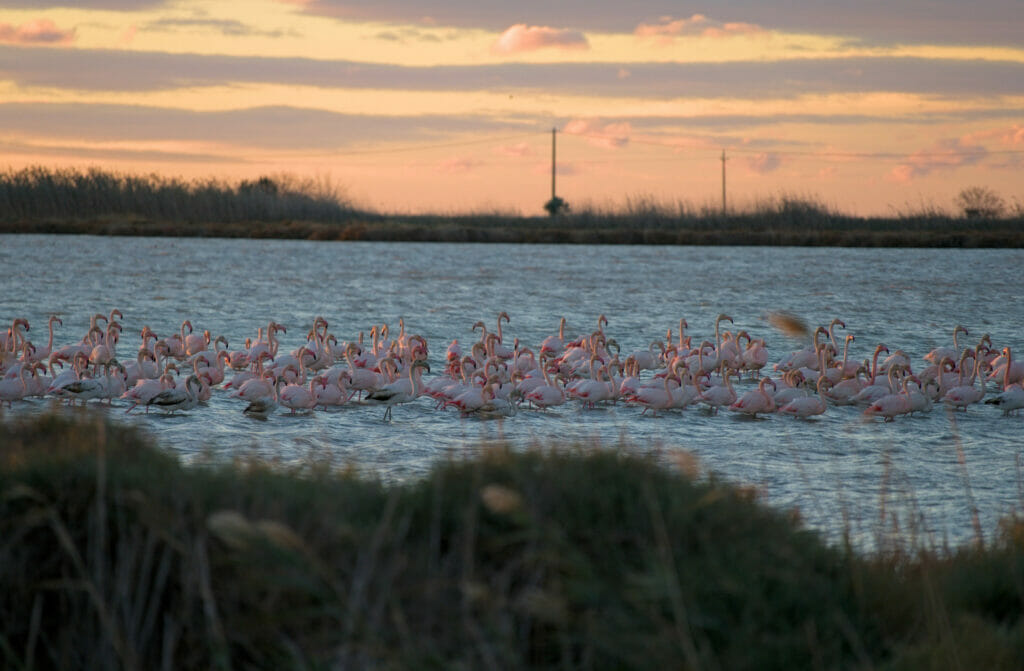
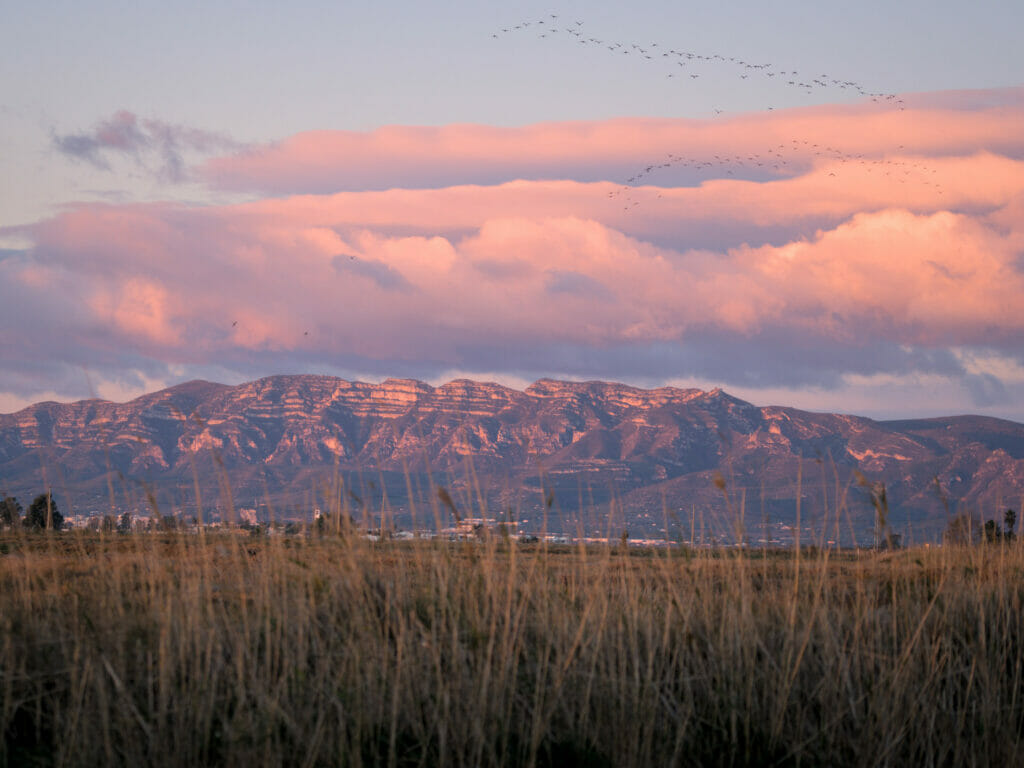
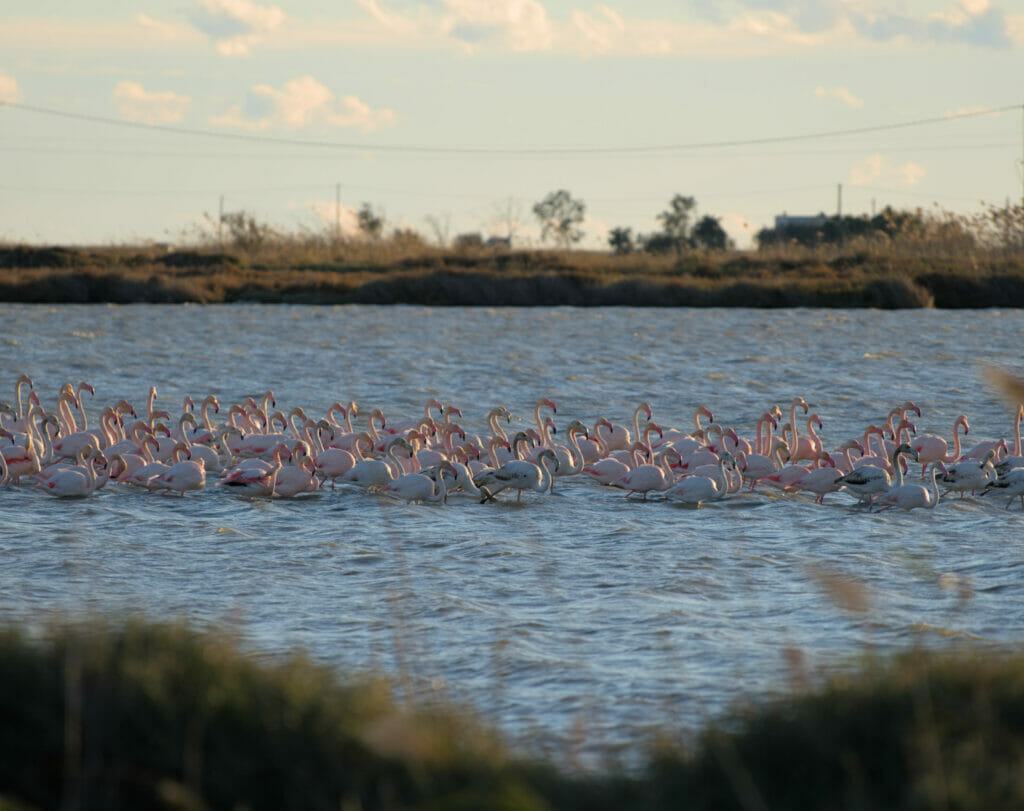
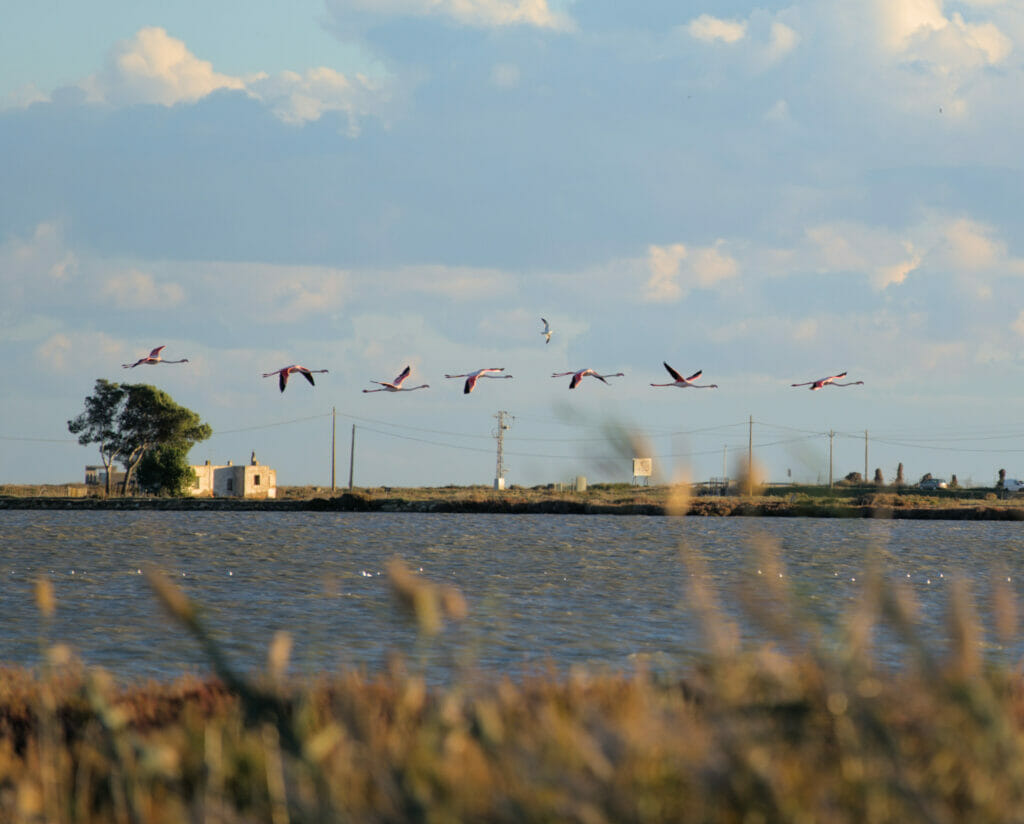
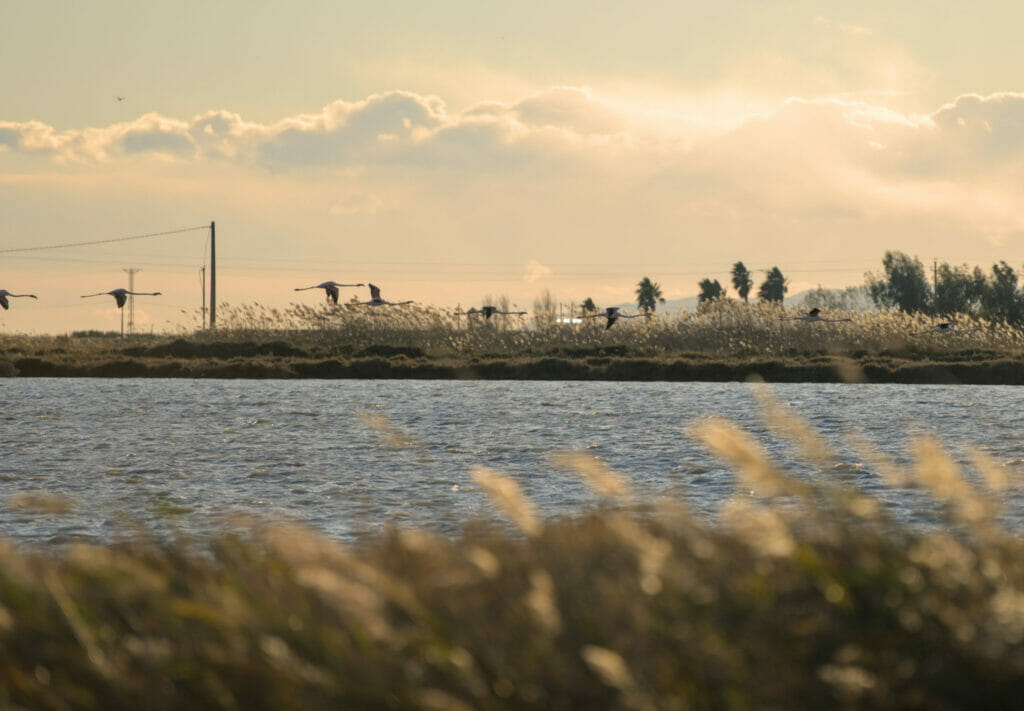
Camping “La Tancada” – Ebro Delta – Come and eat here!
We are not used to talk about campsites but we thought we would share this little nugget! In fact, if we slept here it is for the good and simple reason that the delta is a natural reserve and it is thus forbidden to spend the night there with a van. There are several campsites in the delta but according to our research it was “by there” that we had the most chances to see the flamingos! And it didn’t miss, there were some in all the small lakes surrounding the camp-site.
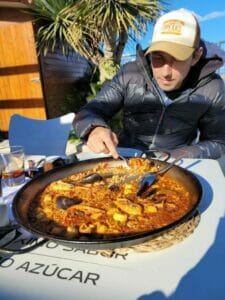
Anyway, back to the point. The campsite itself was ok. Friendly staff, small, ok sanitary facilities and a decent price (16 € per night out of season for 2 people, a van and a dog). But what makes us recommend it is their restaurant! Considering the number of locals who came there for lunch, believe us it’s much more than a simple “camping bar”. It doesn’t look like much from the outside, but they apparently serve the best rice in the area (we’re not the ones saying it… but the TripAdvisor reviews (almost all in Spanish) that we saw afterwards haha). The paella came back to us at 13€ per person and it was divine! We are not “experts” in paella, but it enters easily in the top 3 of our best paellas. They are only open for the “lunch service”. But let’s face it, in Spain that means until 6pm 😉
Well, I think this time we told you everything about our roadtrip along the Catalan coast! We hope you enjoyed the article and that you might have found some ideas for your future trip here. From our side we loved these first discoveries in Catalonia and we hope to have the opportunity to come back here! There are still so many things to see and discover around here… By the way, if you have any advice about unmissable places to go or little addresses to discover, don’t hesitate to leave us a little comment.
Pin it
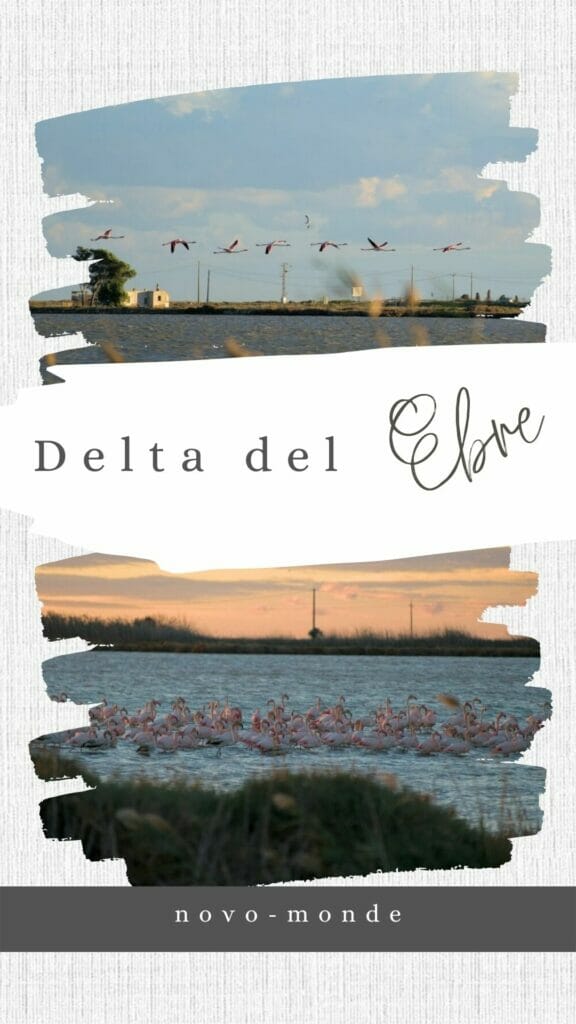
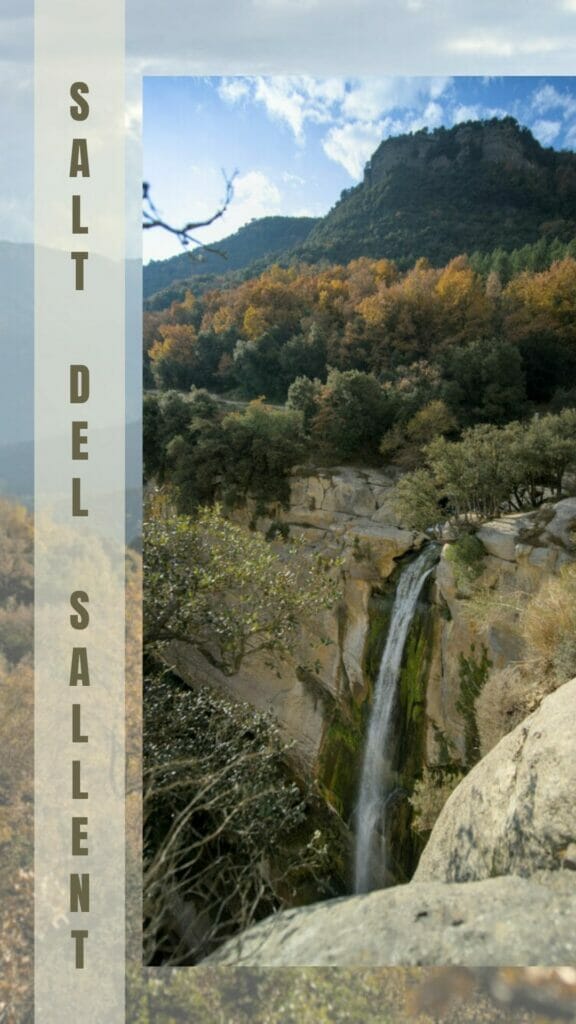
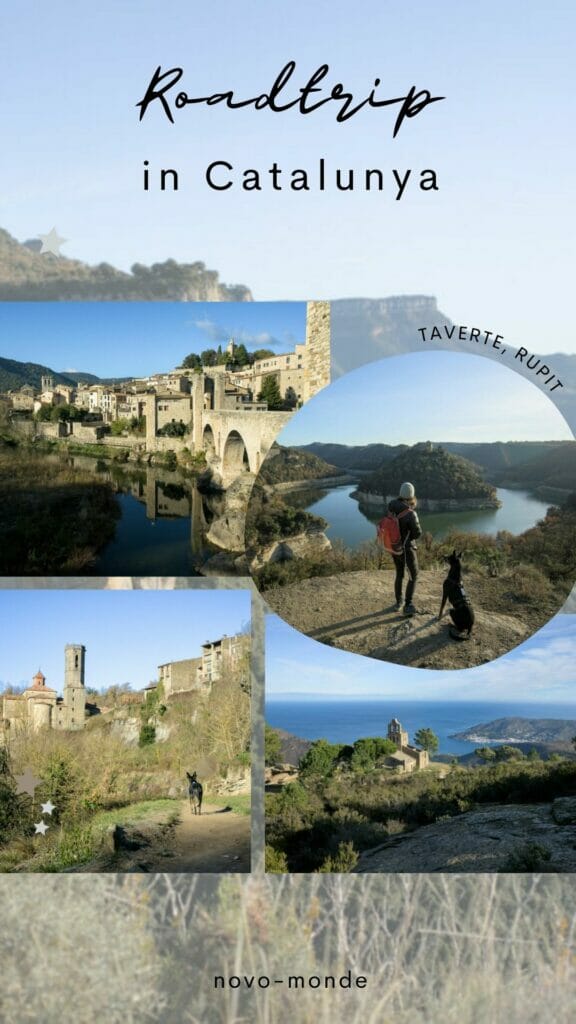
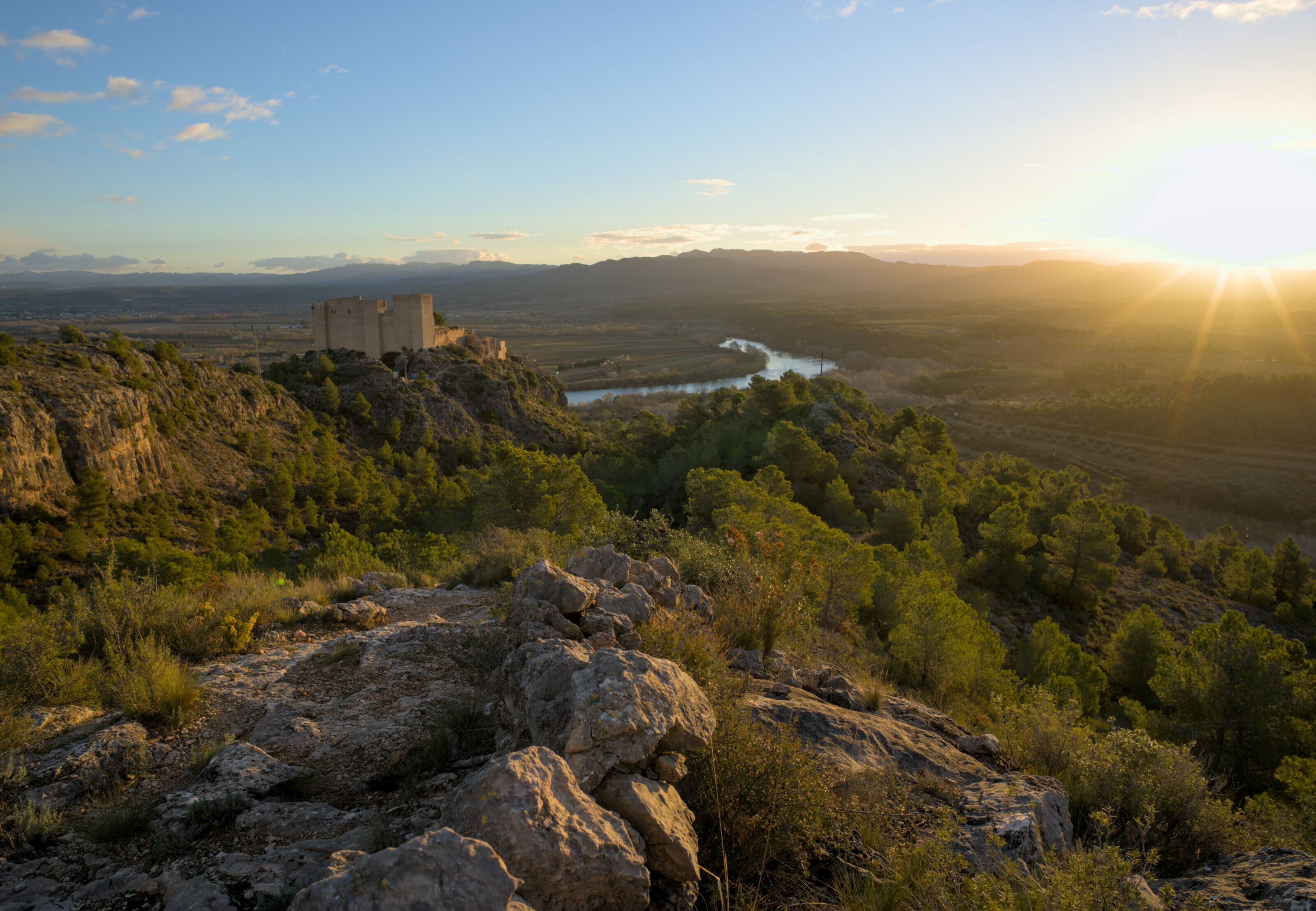
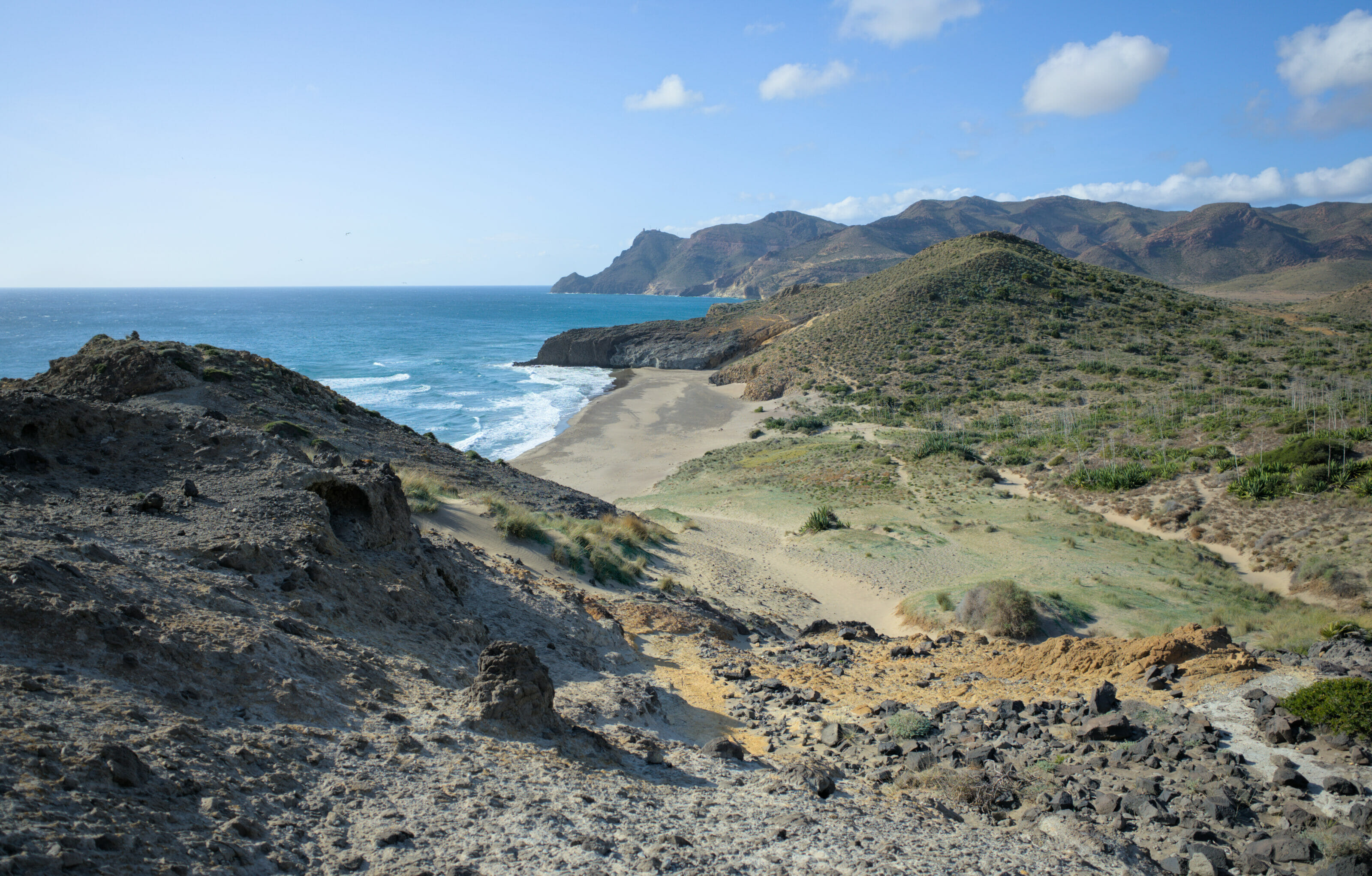
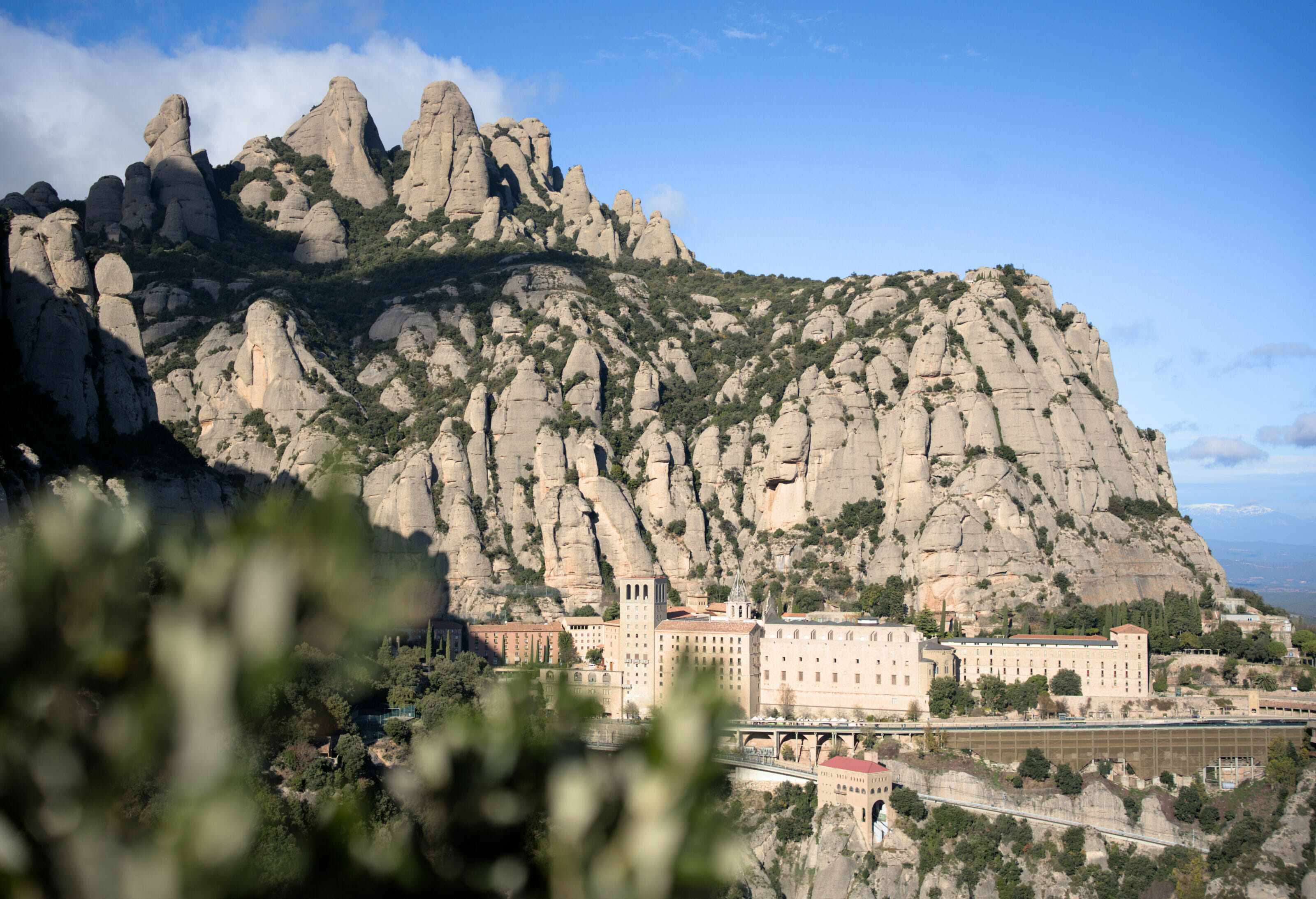
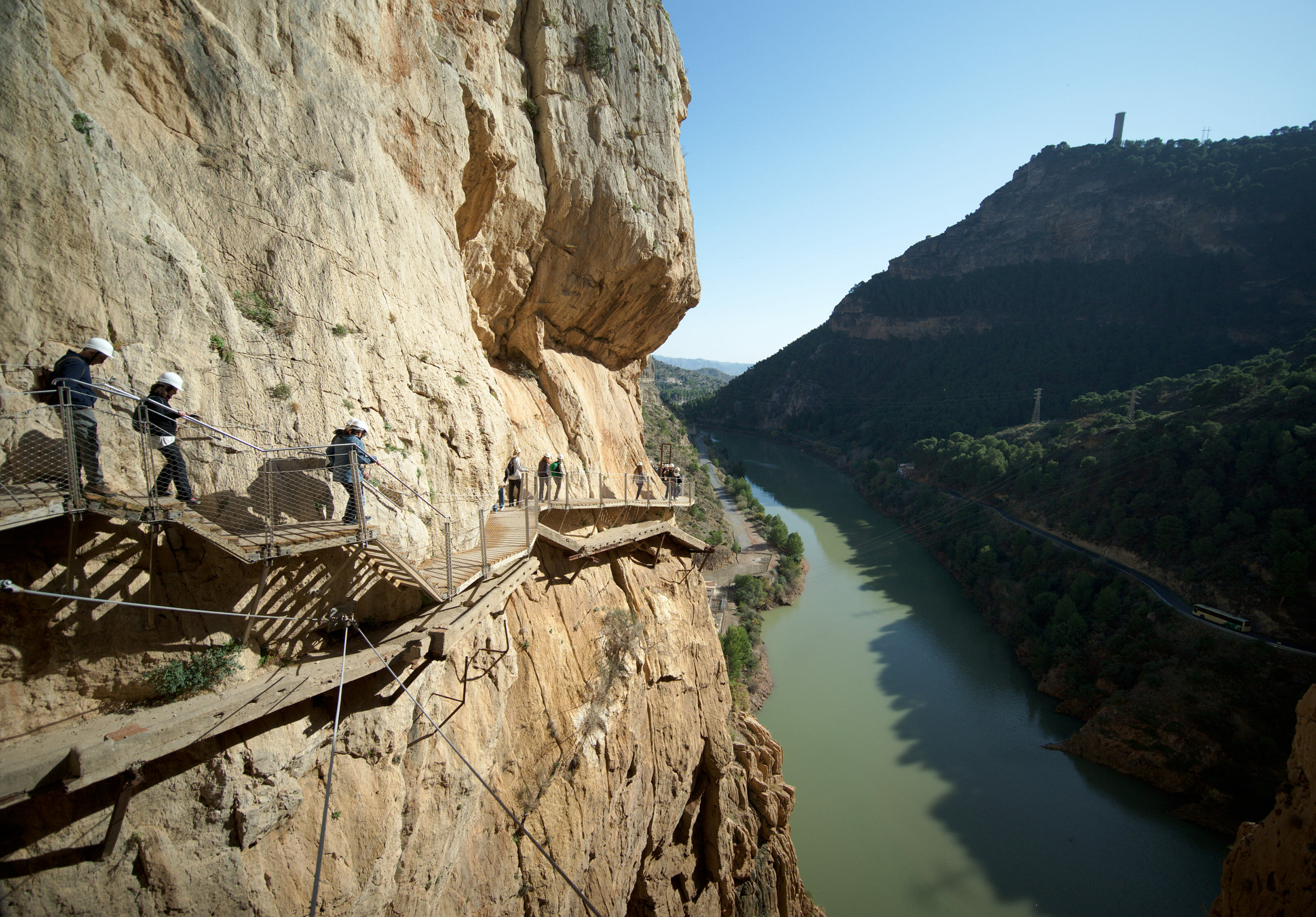
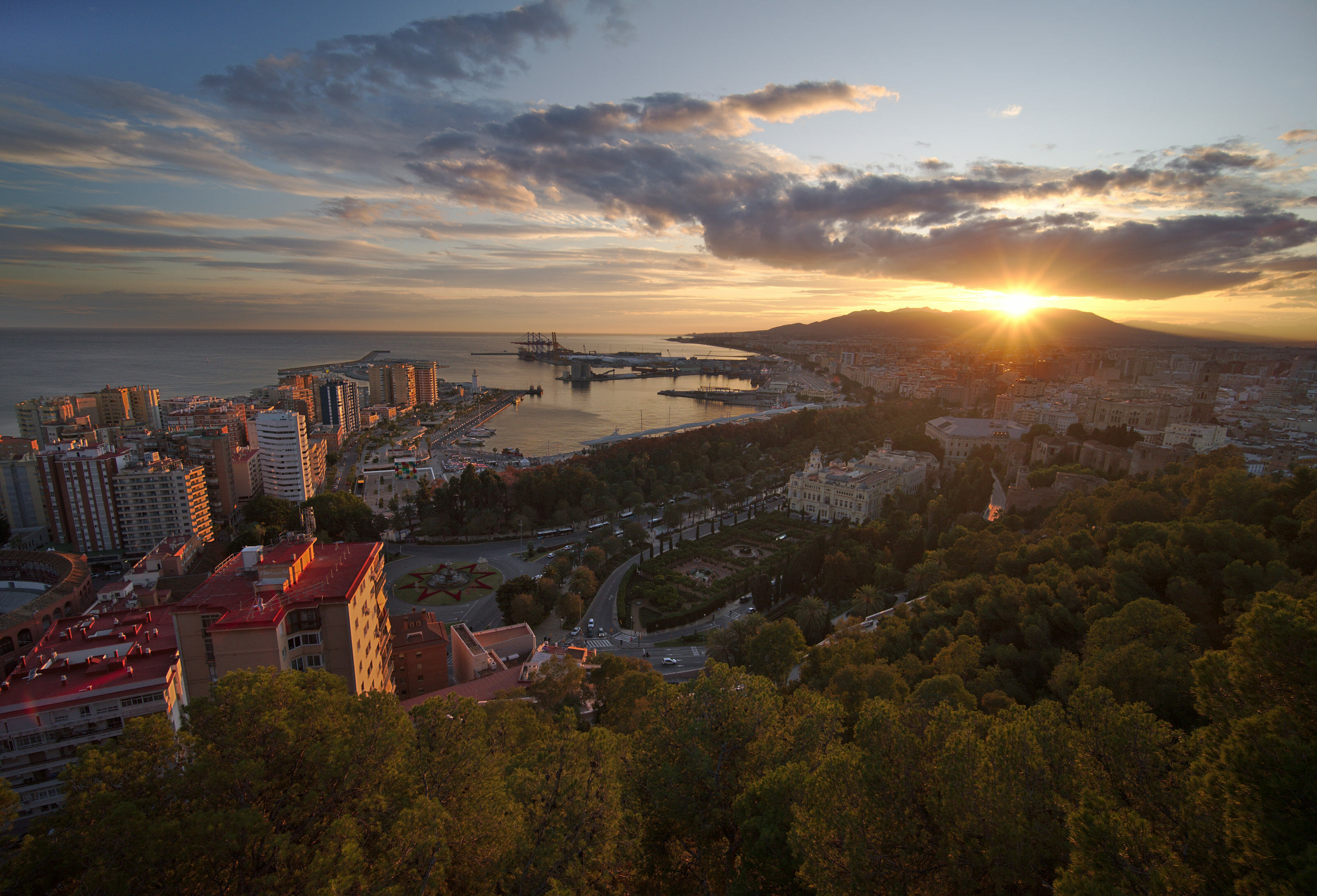
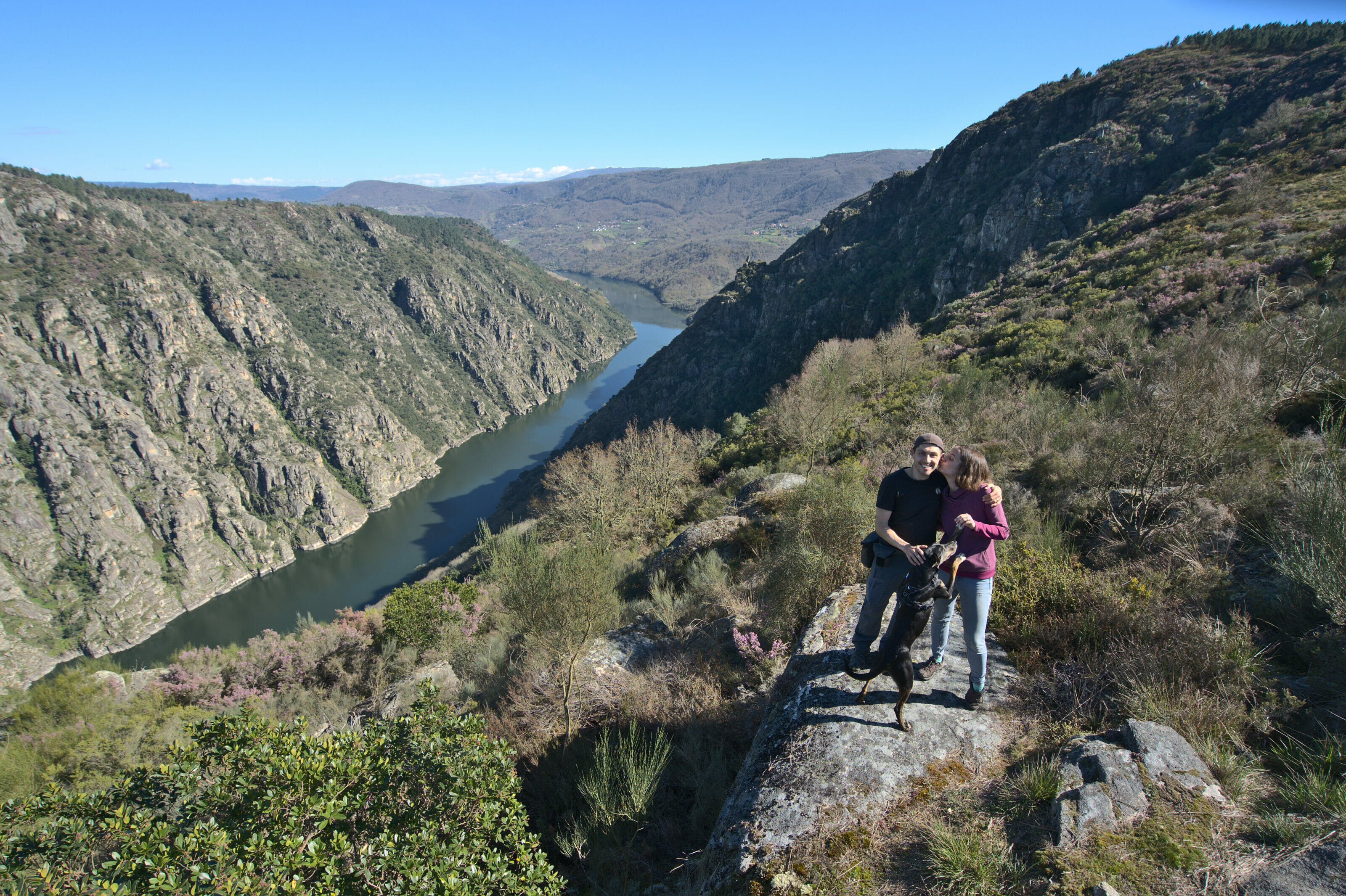
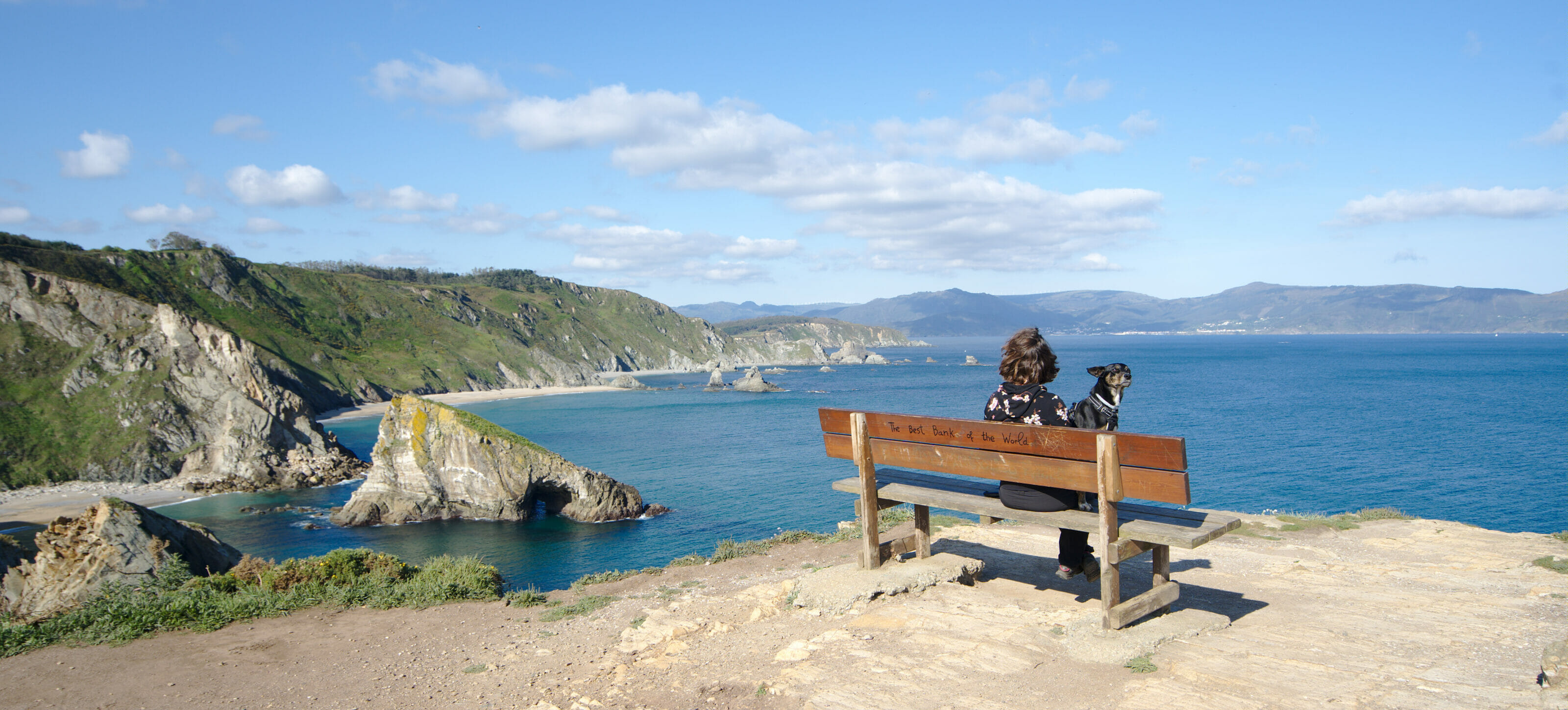
Join the discussion